Forums
- Forums
- Axis And Allies Forum
- General Discussion
- Aviation News
Aviation News
Post a reply
- Go to Next topic
- Go to Welcome
- Go to Introduce Yourself
- Go to General Discussion
- Go to Screenshots, Images and Videos
- Go to Off topic
- Go to Works in Progress
- Go to Skinning Tips / Tutorials
- Go to Skin Requests
- Go to IJAAF Library
- Go to Luftwaffe Library
- Go to RAF Library
- Go to USAAF / USN Library
- Go to Misc Library
- Go to The Ops Room
- Go to Made in Germany
- Go to Campaigns and Missions
- Go to Works in Progress
- Go to Juri's Air-Raid Shelter
- Go to Campaigns and Missions
- Go to Works in Progress
- Go to Skinpacks
- Go to External Projects Discussion
- Go to Books & Resources
-
 Main AdminAn F-35B Lightning II with Marine Fighter Attack Squadron 121, based out of Marine Corps Air Station Yuma, Ariz., performs a vertical landing as part of required flying field carrier landing practices (FCLP) at the station?s auxiliary landing field, Monday, April 27, 2015. The landing field simulates the flight deck of an aircraft carrier to prepare pilots for landing and taking off at sea.
Main AdminAn F-35B Lightning II with Marine Fighter Attack Squadron 121, based out of Marine Corps Air Station Yuma, Ariz., performs a vertical landing as part of required flying field carrier landing practices (FCLP) at the station?s auxiliary landing field, Monday, April 27, 2015. The landing field simulates the flight deck of an aircraft carrier to prepare pilots for landing and taking off at sea.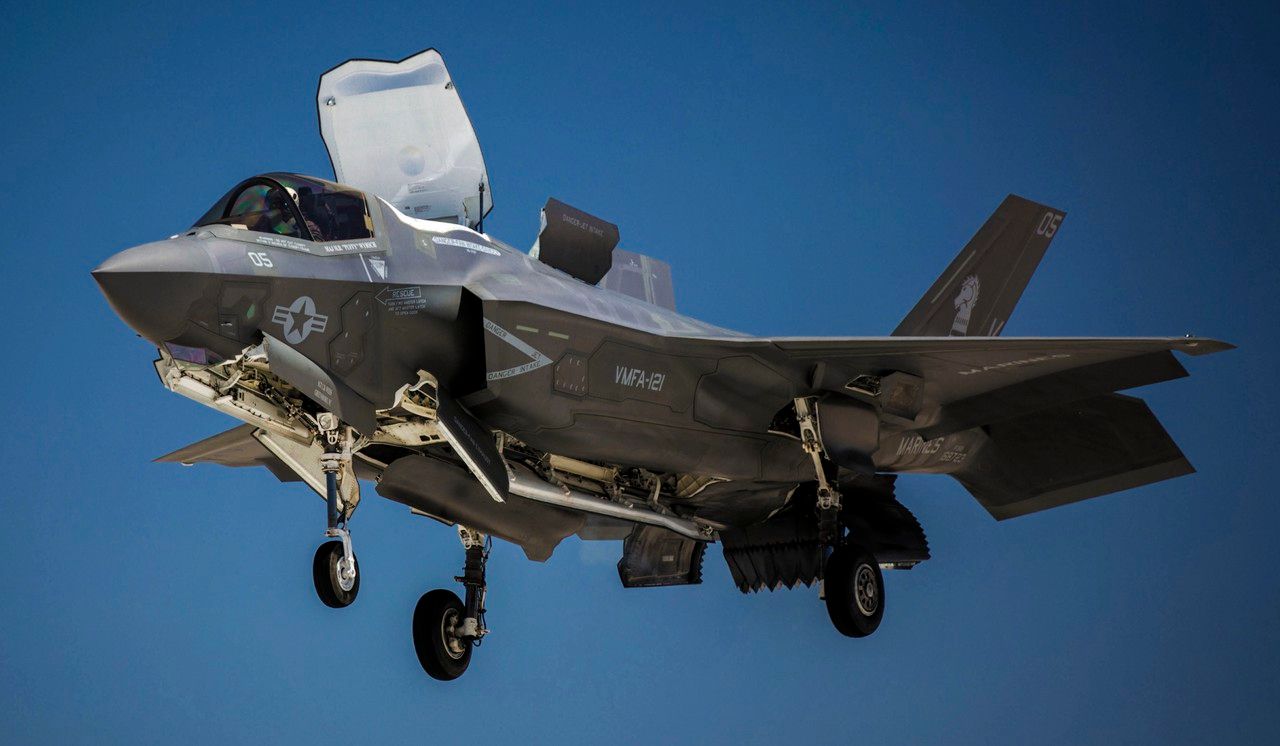
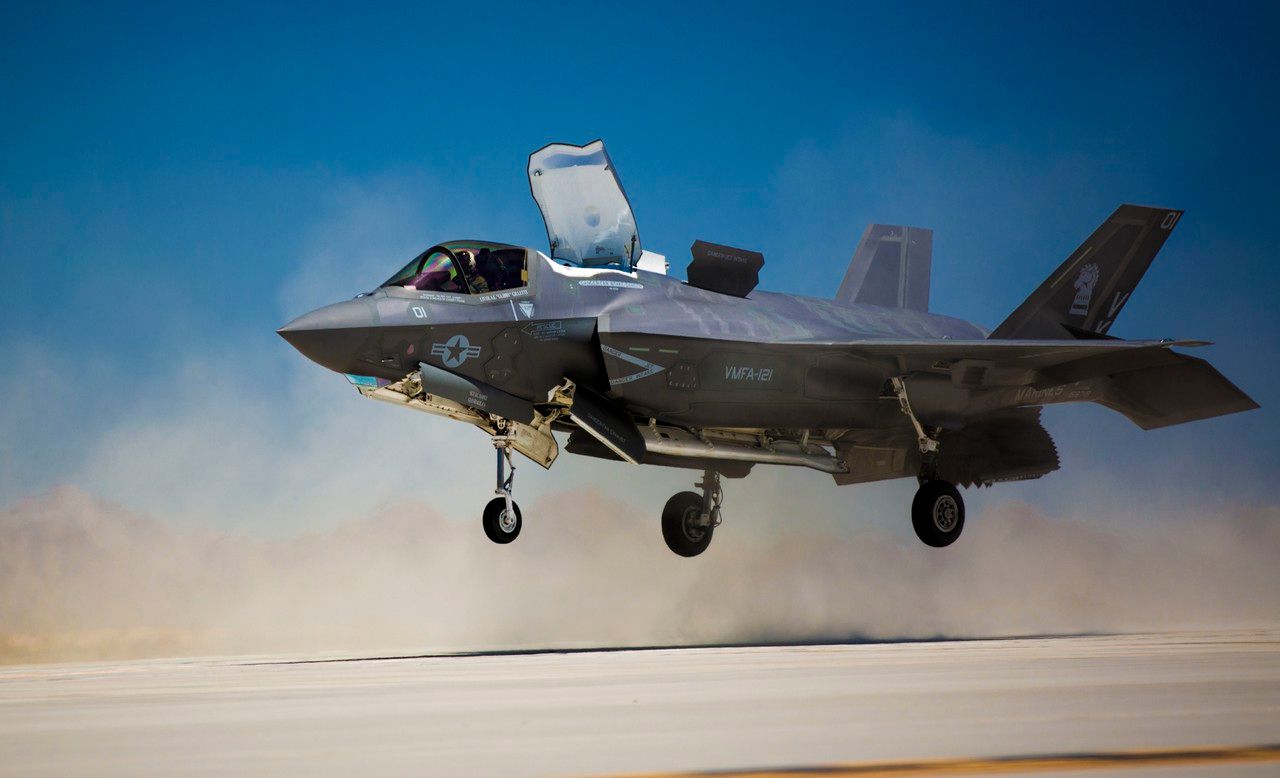
WASHINGTON --- The State Department has made a determination approving a possible Foreign Military Sale to Australia for F/A-18E/F Super Hornet and EA-18G Growler Aircraft Sustainment and associated equipment, parts and logistical support for an estimated cost of $1.5 billion. The Defense Security Cooperation Agency delivered the required certification notifying Congress of this possible sale today.
The Government of Australia has requested a possible sale of follow-on sustainment support and services for twenty four (24) AF/A-18Fs Super Hornet and twelve (12) AEA-18G Growler aircraft. The sustainment efforts will include software and hardware updates, Engineering Change Proposals, System Configuration upgrades, system integration and testing, engine component improvement, tools and test equipment, spare and repair parts, support equipment, publications and technical documentation, personnel training and training equipment, aircrew trainer devices upgrades, U.S. Government and contractor technical assistance, and other related elements of logistics and program support. The estimated cost is $1.5 billion.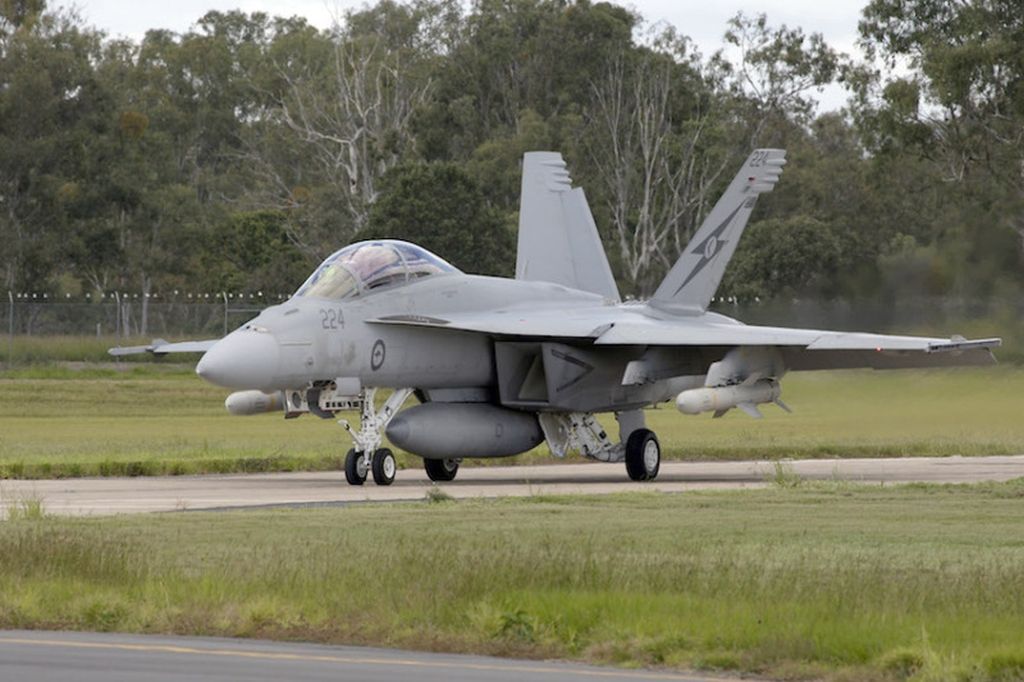
LINK - http://www.defense-aerospace.com/article-view/release/163219/us-approves-%241.75bn-support-package-for-australian-f_18s%2C-destroyers.html
The first C-5C to be modernized as an ?M? was ferried on April 28 by Major General Timothy M. Zadalis, commander, 618th Air Operations Center (Tanker Airlift Control Center), Scott Air Force Base, Illinois. The C-5M will be delivered to Travis Air Force Base, California, after a stop at Stewart Air National Guard Base, New York, where it will undergo internal paint restoration. The new space cargo modified C-5M will be the only ?M? designed to haul satellites and other large space-related cargo. With the troop compartment removed and modification to their rear loading doors, this aircraft has a larger cargo area than other C-5Ms.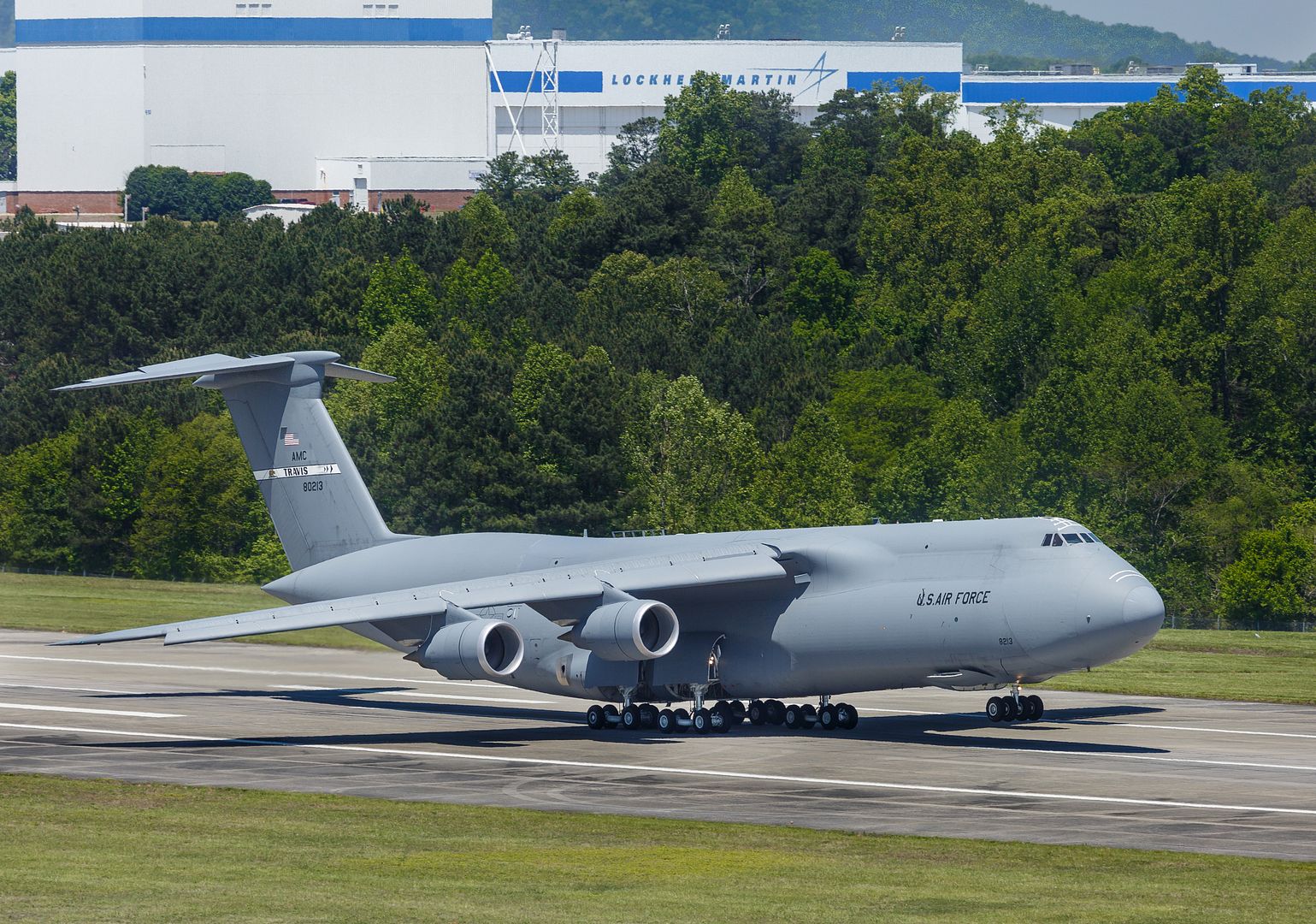
Lockheed Martin photo by Thinh Nguyen.
-
 Main AdminBrig. Gen. Scott Pleus, 56th Fighter Wing commander, parks the flagship F-35 Lightning ll at Luke Air Force Base, Arizona, April 28, 2015. The flagship's arrival coincides with the start of Luke F-35 student pilot training, which begins in May. Luke now has 22 of 144 F-35s scheduled to be stationed at the Glendale, Arizona, base. (U.S. Air Force photo by Staff Sgt. Staci Miller)
Main AdminBrig. Gen. Scott Pleus, 56th Fighter Wing commander, parks the flagship F-35 Lightning ll at Luke Air Force Base, Arizona, April 28, 2015. The flagship's arrival coincides with the start of Luke F-35 student pilot training, which begins in May. Luke now has 22 of 144 F-35s scheduled to be stationed at the Glendale, Arizona, base. (U.S. Air Force photo by Staff Sgt. Staci Miller)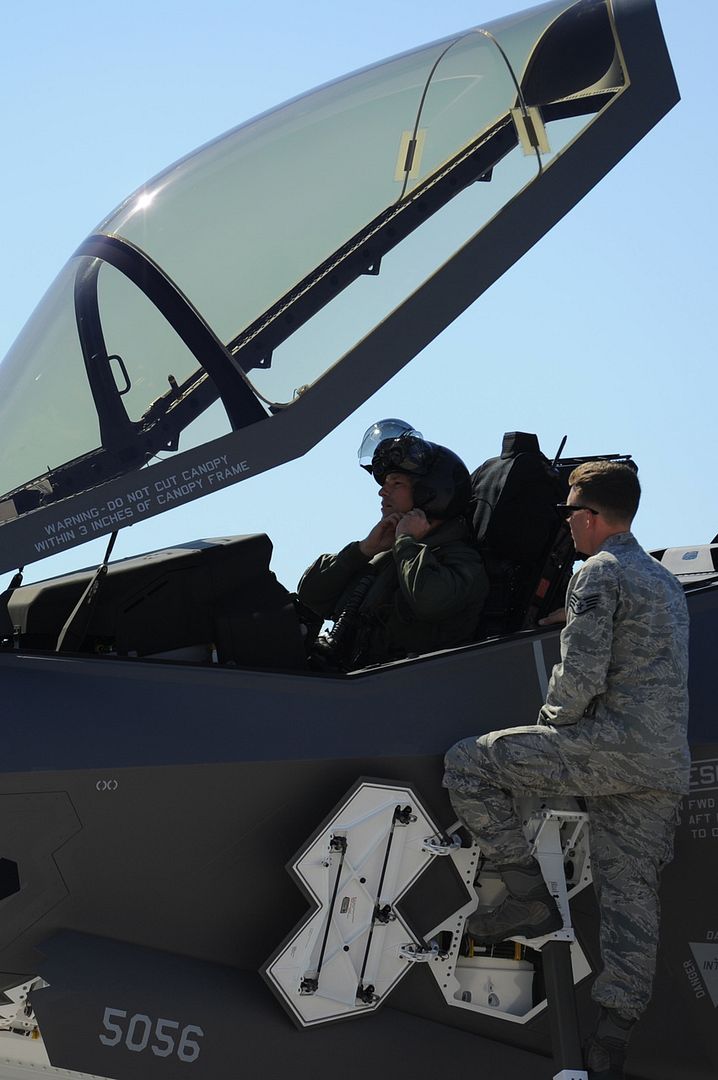
Brig. Gen. Scott Pleus, 56th Fighter Wing commander, lands the flagship F-35 Lightning ll at Luke Air Force Base, Arizona, April 28, 2015. The flagship's arrival coincides with the start of Luke F-35 student pilot training, which begins in May. Luke now has 20 U.S. F-35s and two from the Royal Australian Air Force. (U.S. Air Force photo by Staff Sgt. Staci Miller)
A U.S. Air Force AC-130U gunship sits on the flight line during Emerald Warrior at Hurlburt, Fla., April 27, 2015. Emerald Warrior is the Department of Defense's only irregular warfare exercise, allowing joint and combined partners to train together and prepare for real world contingency operations. (U.S. Air Force photo by Tech. Sgt. Joshua J. Garcia/Released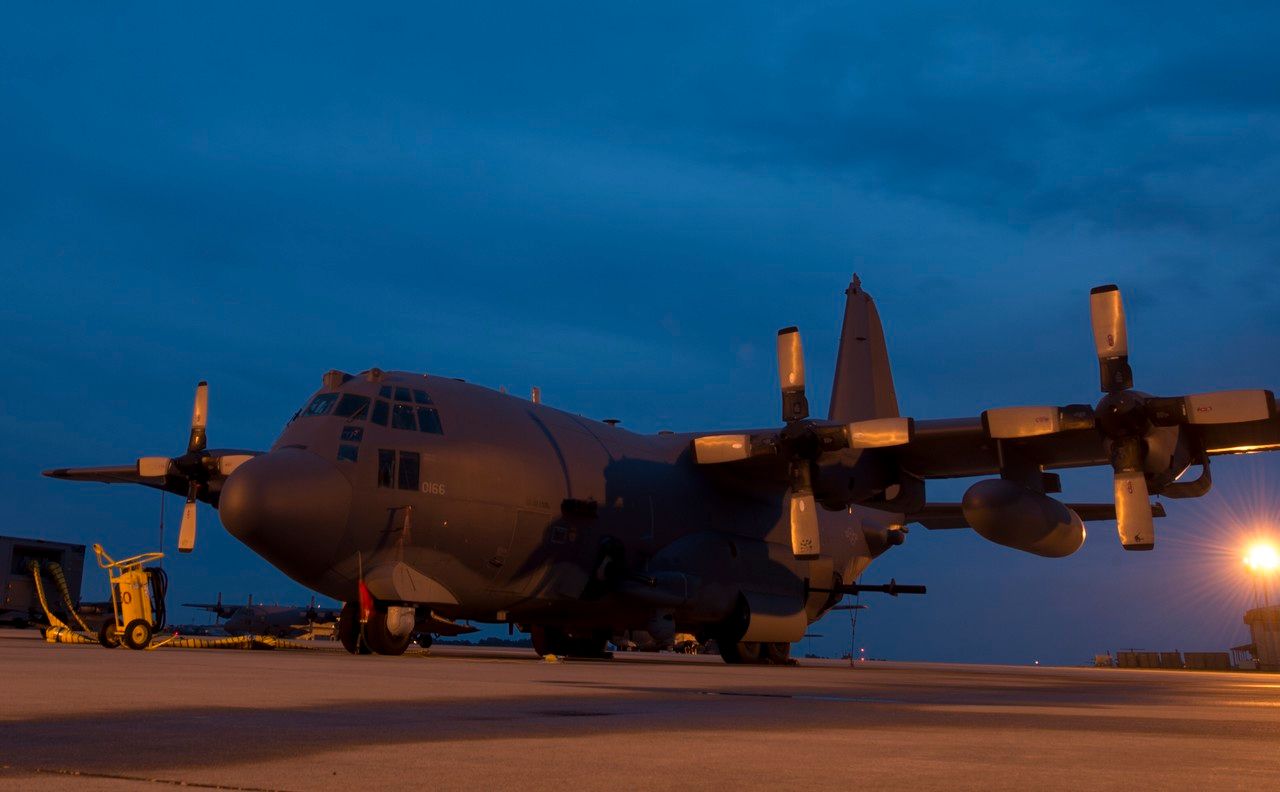
PARIS --- The Emir of Qatar has agreed to buy 24 Dassault Rafale fighters, the Elys?e Palace announced on Thursday morning, confirming reports by several French media earlier on April 30.
French President Fran?ois Hollande will travel to Doha on May 4 to witness the signature of the contracts by the CEOs of Dassault Aviation and MBDA, according to the Elys?e?s official communique. Contracts will be signed between the two manufacturers and the State of Qatar, while a separate agreement guaranteeing the deal will be signed between the two governments.
LINK - http://www.defense-aerospace.com/article-view/release/163267/qatar-confirms-order-for-24-rafales.html
-
 Main AdminAn F-16 Fighting Falcon assigned to the 510th Fighter Squadron, flies over the Mediterranean Sea, April 28, 2015. More than 50 Air Force Reservists, including chaplains, crew chiefs and force support worked with Aviano units during their two-week annual tour. (U.S. Air Force photo by Airman First Class Chandler Baker/Released)
Main AdminAn F-16 Fighting Falcon assigned to the 510th Fighter Squadron, flies over the Mediterranean Sea, April 28, 2015. More than 50 Air Force Reservists, including chaplains, crew chiefs and force support worked with Aviano units during their two-week annual tour. (U.S. Air Force photo by Airman First Class Chandler Baker/Released)
The Russian defense ministry has confirmed that it will restart the production line for the Soviet-era Tupolev Tu-160 ?Blackjack? supersonic strategic bomber.
In a series of tweets on 29 April, the ministry says it is ?necessary to resume production of the Tu-160 missile carriers?, adding that it is ?the best aircraft in its class?.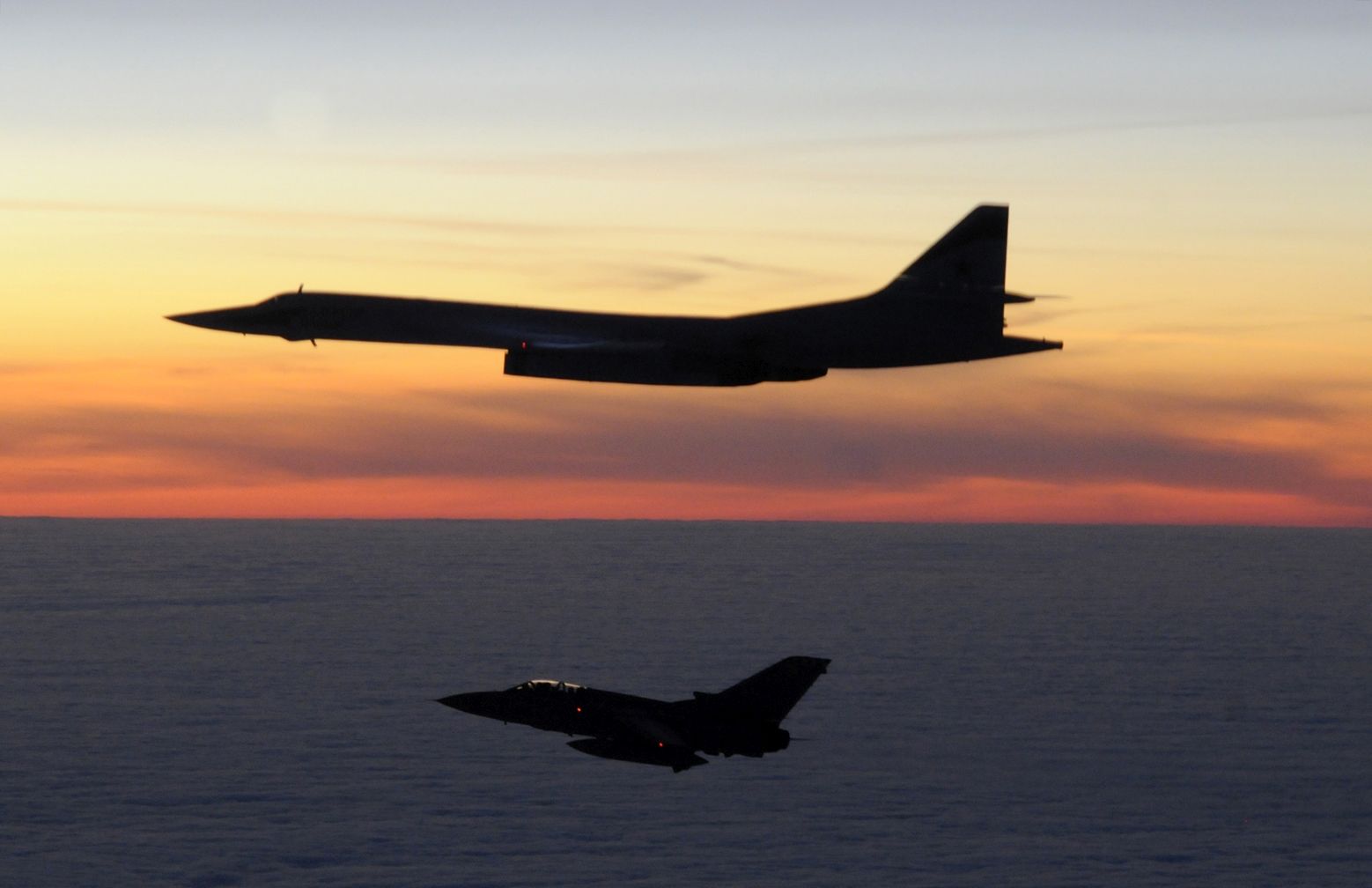
ABILENE, Texas, April 30, 2015 ? The Boeing [NYSE: BA] B-1B Lancer celebrates its soon to be 30th anniversary with the U.S. Air Force at Dyess Air Force Base this week ? marking one of many milestones in a legacy that will continue long into the future as Boeing?s B-1 team ushers the supersonic bomber into the digital age with new upgrades.
The latest upgrade, a trio of updates known as the integrated battle station, are ensuring the B-1 meets today?s mission requirements and further establishes a solid foundation for additional modernization in the decades to come.
?Boeing?s integrated battle station work improves the aircraft?s performance as a global strike platform,? said Dan Ruder, Boeing?s Advanced Programs Manager. ?We?re installing all-digital cockpit displays and connecting the bombers to a global communications network, capabilities that allow for greater agility and situational awareness.?
?The adaptability of the jet has ensured its relevance ? not only from the early 1990s to today, but from today well into the future,? said Col. Jason Combs, 7th Operations Group Commander at Dyess AFB, one of two bases that house the B-1 fleet.
The combat-proven bomber continues to stand out on current missions, recently deploying a record number of precision-guided bombs during a six-month deployment in the Middle East as part of Operation Inherent Resolve.
?I?ve never seen the jet as capable as it is today. When I first flew the B-1 in 1997, I recall debriefing using a handheld tape recorder, whereas today you go in the cockpit and have multiple screens with digital displays. It?s amazing how far the B-1 has come,? said Col. Combs.
First delivered on June 29, 1985, the U.S. Air Force B-1 fleet has continually evolved to meet the demands of a rapidly changing battlefield. It transitioned from fulfilling a nuclear mission to be a conventional bomber in the 1990s and then was modified to perform close air support missions in the past decade.
?Boeing?s role in maintaining the readiness of the nation?s bomber fleet is one we take seriously ? our mission is to support the safety and effectiveness of our nation?s service members. We look forward to supporting the B-1?s mission for years to come,? said Rick Greenwell, Boeing?s B-1 Program Director.
EVERETT, Wash., April 30, 2015 /PRNewswire/ -- Boeing (NYSE: BA) and Cathay Pacific Airways celebrated today the delivery of the airline's 50th 777-300ER (Extended Range). With this delivery, Cathay Pacific will have 67 777s in operation, which also includes 12 777-300s and five 777-200s. Cathay Pacific is slated to receive three more 777-300ERs this year and is one of the launch customers for the 777X with 21 777-9X airplanes on order.
"The 777-300ER forms the backbone of our long-haul fleet," said Ivan Chu, Chief Executive, Cathay Pacific Airways. "We operate the largest 777-300ER fleet in Asia, and this super-efficient long haul aircraft allows us to operate multiple daily frequencies to intercontinental markets, which gives our customers a lot of choices."
Cathay Pacific was voted the world's best airline of the year in 2014, for the fourth time, in the airline industry's most comprehensive customer satisfaction surveys conducted by SkyTrax. It bases all awards on a survey of over 18 million airline passengers hailing from over 160 countries.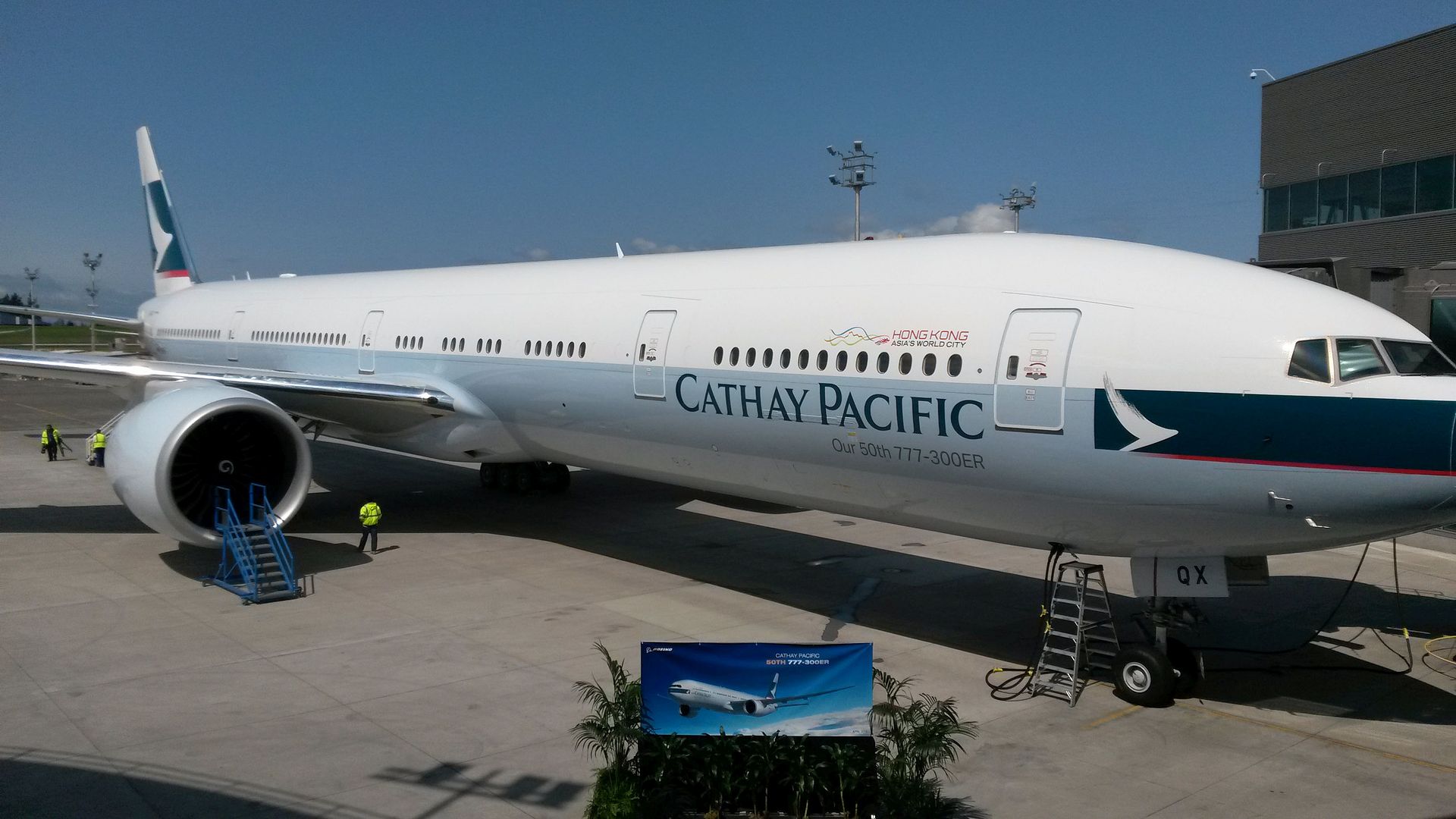
-
 Main AdminSAN DIEGO ? May 4, 2015 ? For an unprecedented third year in a row, the U.S. Air Force RQ-4 Global Hawk unmanned aircraft program was officially awarded the Dr. James G. Roche Sustainment Excellence Award for most improved performance in aircraft maintenance and logistics readiness during a ceremony April 28 at the Pentagon. Northrop Grumman Corporation (NYSE:NOC) is the prime contractor for the high-flying fleet of Global Hawks.
Main AdminSAN DIEGO ? May 4, 2015 ? For an unprecedented third year in a row, the U.S. Air Force RQ-4 Global Hawk unmanned aircraft program was officially awarded the Dr. James G. Roche Sustainment Excellence Award for most improved performance in aircraft maintenance and logistics readiness during a ceremony April 28 at the Pentagon. Northrop Grumman Corporation (NYSE:NOC) is the prime contractor for the high-flying fleet of Global Hawks.
A photo accompanying this release is available at: http://media.globenewswire.com/noc/mediagallery.html?pkgid=32636
Air Force officials annually determine the award winner by calculating improvements from a predetermined set of metrics that impact performance. The Global Hawk demonstrated the most significant improvement in performance and sustainment based on factors like high total aircraft availability, mission capability and low non-mission capability rates for maintenance and supply.
"Winning the Roche award for the third year in a row is an incredible achievement for the Air Force Life Cycle Management Center. Northrop Grumman is proud to partner with the Air Force in providing unmatched logistical and maintenance support," said Mick Jaggers, Global Hawk Unmanned Aircraft System program director, Northrop Grumman Aerospace Systems. "The Roche award is significant because it focuses solely on the numbers. When it comes to sustainment, the Global Hawk has consistently ranked the best in the Air Force inventory."
The Sustainment Excellence Award is granted by Headquarters U.S. Air Force Logistics, Installations and Mission Support. It is named for Dr. James G. Roche, the 20th Secretary of the Air Force. He served in the Air Force's top position from 2001 to 2005.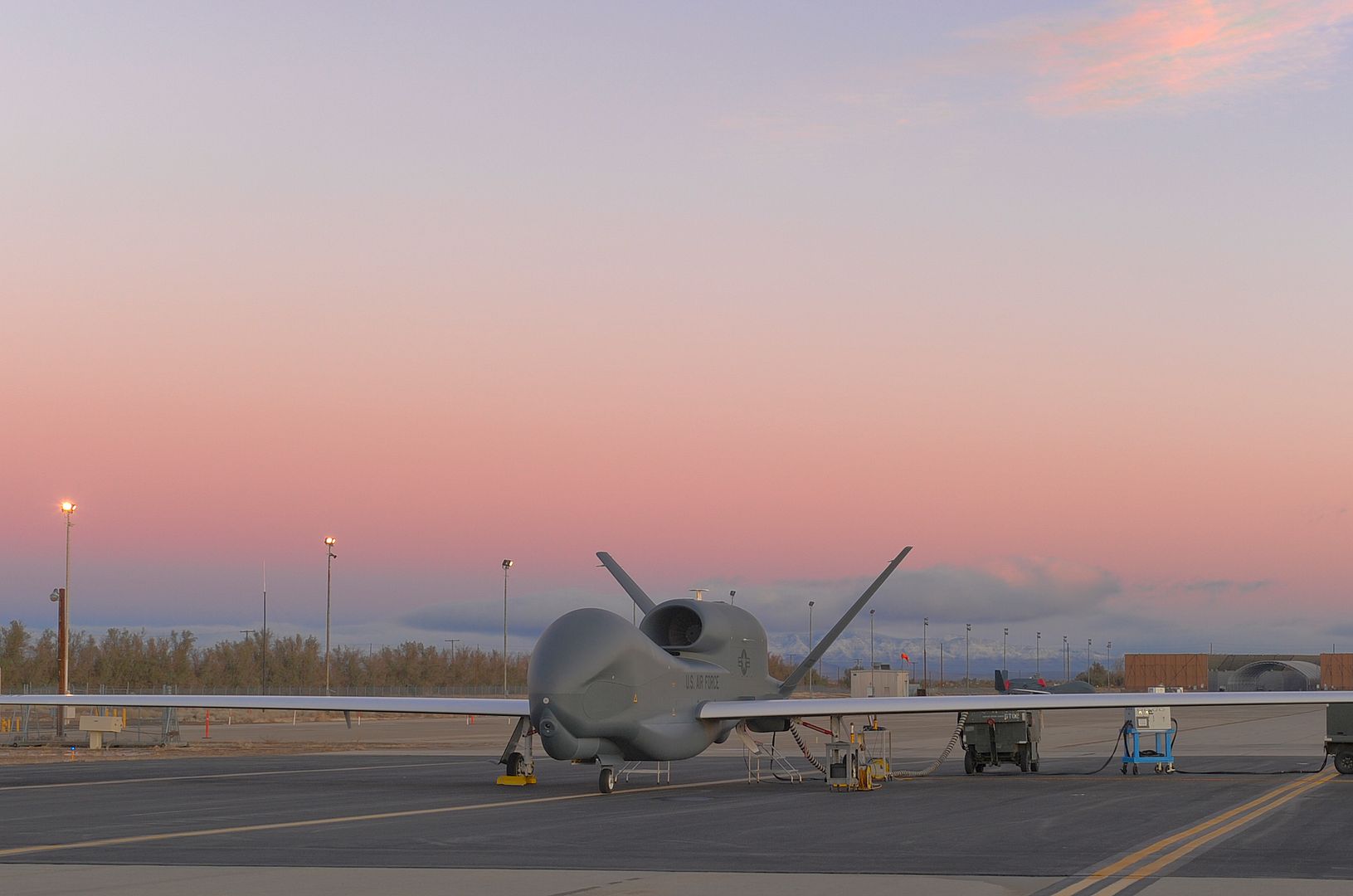
DENVER, May 4, 2015 ? Using a 10-ton crane, Lockheed Martin [NYSE: LMT] engineers and technicians gently lowered the system module of the U.S. Air Force?s first next generation GPS III satellite into place over its propulsion core, successfully integrating the two into one space vehicle.
GPS III space vehicle one (SV 01) is the first of a new, advanced GPS satellite design block for the Air Force. GPS III will deliver three times better accuracy, provide up to eight times improved anti-jamming capabilities and extend spacecraft life to 15 years, 25 percent longer than the satellites launching today. GPS III?s new L1C civil signal also will make it the first GPS satellite interoperable with other international global navigation satellite systems.
The systems integration event brought together several major fully functional satellite components. The system module includes the navigation payload, which performs the primary positioning, navigation and timing mission. The functional bus contains sophisticated electronics that manage all satellite operations. The propulsion core allows the satellite to maneuver for operations on orbit.
?The final integration of the first GPS III satellite is a major milestone for the GPS III program,? said Mark Stewart, vice president of Lockheed Martin?s Navigation Systems mission area. ?This summer, SV 01 will begin Thermal Vacuum testing, where it will be subjected to simulated harsh space environments. Successful completion of this testing is critical as it will help validate our design and manufacturing processes for all follow-on GPS III satellites.?
Lockheed Martin is currently under contract to build eight GPS III satellites at its GPS III Processing Facility near Denver, a factory specifically designed to streamline satellite production.
The GPS III team is led by the Global Positioning Systems Directorate at the U.S. Air Force Space and Missile Systems Center. Air Force Space Command?s 2nd Space Operations Squadron (2SOPS), based at Schriever Air Force Base, Colorado, manages and operates the GPS constellation for both civil and military users.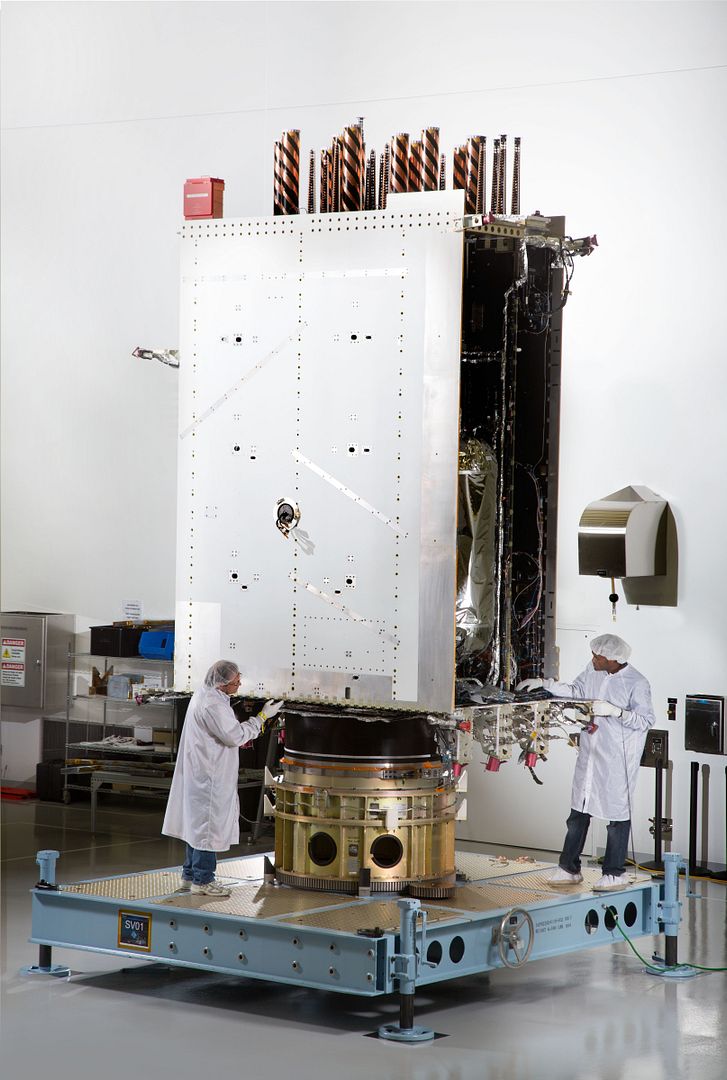
Successful First Guided Firing of Meteor from Rafale
(Source: French defence procurement agency, DGA; issued April 30, 2015)
On 28th April 2015, teams from the French Ministry of Defence, Dassault Aviation and MBDA carried out the first guided firing of the long-range Meteor missile against an air target from a Rafale combat aircraft.
The firing, from a Rafale prepared at the DGA?s Cazaux Flight Test Centre (near Bordeaux, S.W. France), proceeded successfully within the secured zone of the DGA Essais de Missiles (previously Centre d'Essais des Landes) in Biscarosse (also near Bordeaux).
Following on from earlier missile separation trials carried out in 2013 and 2014, this firing represents an important milestone in the integration of Meteor onto the Rafale in line with the development of the aircraft in its next F3-R standard.
With a throttleable ramjet motor and ?fire and forget? firing mode, Meteor is intended for very long BVR (Beyond Visual Range) air defence operations.
Thanks to the performance of the RBE2 AESA (Active Electronically Scanned Array) radar which equips the Rafale (the only European combat aircraft currently equipped operationally with this kind of sensor), it is able to intercept targets at very long range thereby complementing the currently deployed MICA missile used for combat and self defence.
The first Meteor missiles will be delivered as of 2018 to equip the Rafales of the French Air Force and Navy.
The result of a cooperation between France, Germany, Italy, Spain, Sweden and the UK launched in 2003, Meteor is a federated programme enabling the consolidation of the European defence industry and technology base associated with the missile sector.
NASA's ten-engine UAV, dubbed the Greased Lightning (GL-10), recently showed off a slick new trick in the skies over Hampton, Virginia. The drone, which is under development by a team at the Langley Research Center, had already passed its initial hovering tests last August; but that was the easy part.
LINK - http://www.engadget.com/2015/05/01/nasas-10-engine-electric-uav-now-flies-as-well-as-it-hovers/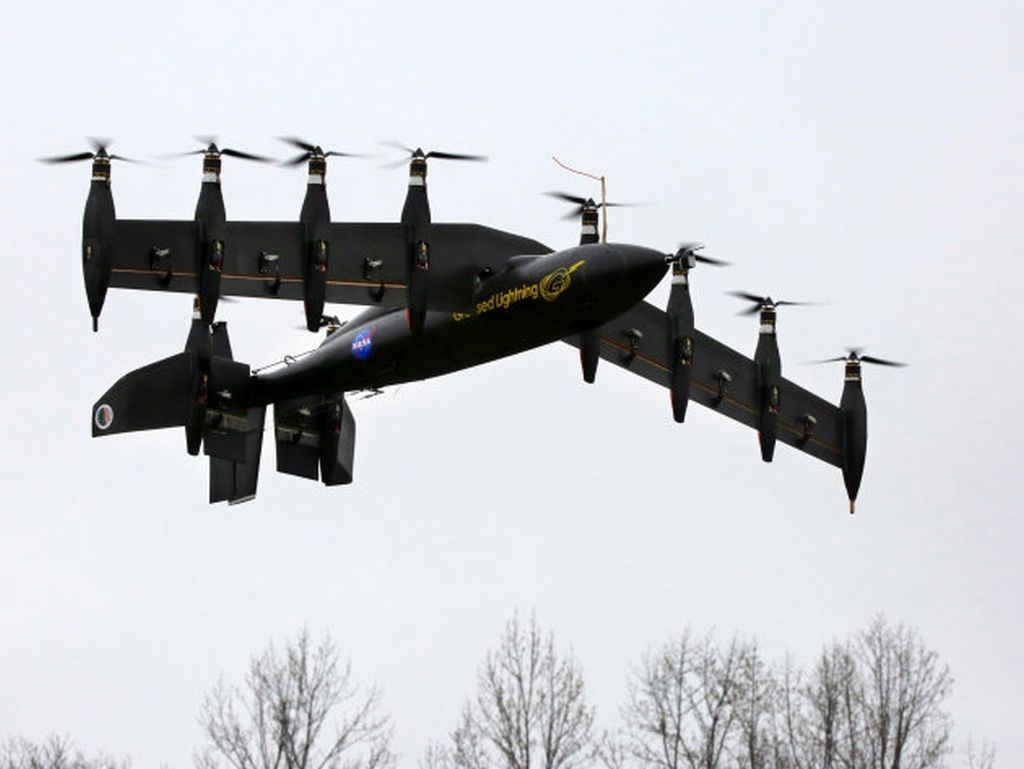
-
 Level 3Stunning, but the fuselage halves joint needs a lot of work !
Level 3Stunning, but the fuselage halves joint needs a lot of work !
Wingco. -
9 years agoTue May 05 2015, 03:24pm
 Main AdminCold War II
Main AdminCold War II
Russian military vehicles including the new Russian T-14 Armata tank, center, make their way to Red Square during a rehearsal for the Victory Day military parade which will take place at Moscow's Red Square on May 9 to celebrate 70 years after the victory in WWII, in Moscow, Russia, Monday, May 4, 2015. Russia's new Armata tank has appeared in public for the first time, rumbling down a broad Moscow avenue on its way to Red Square for the Victory Day parade's final rehearsal.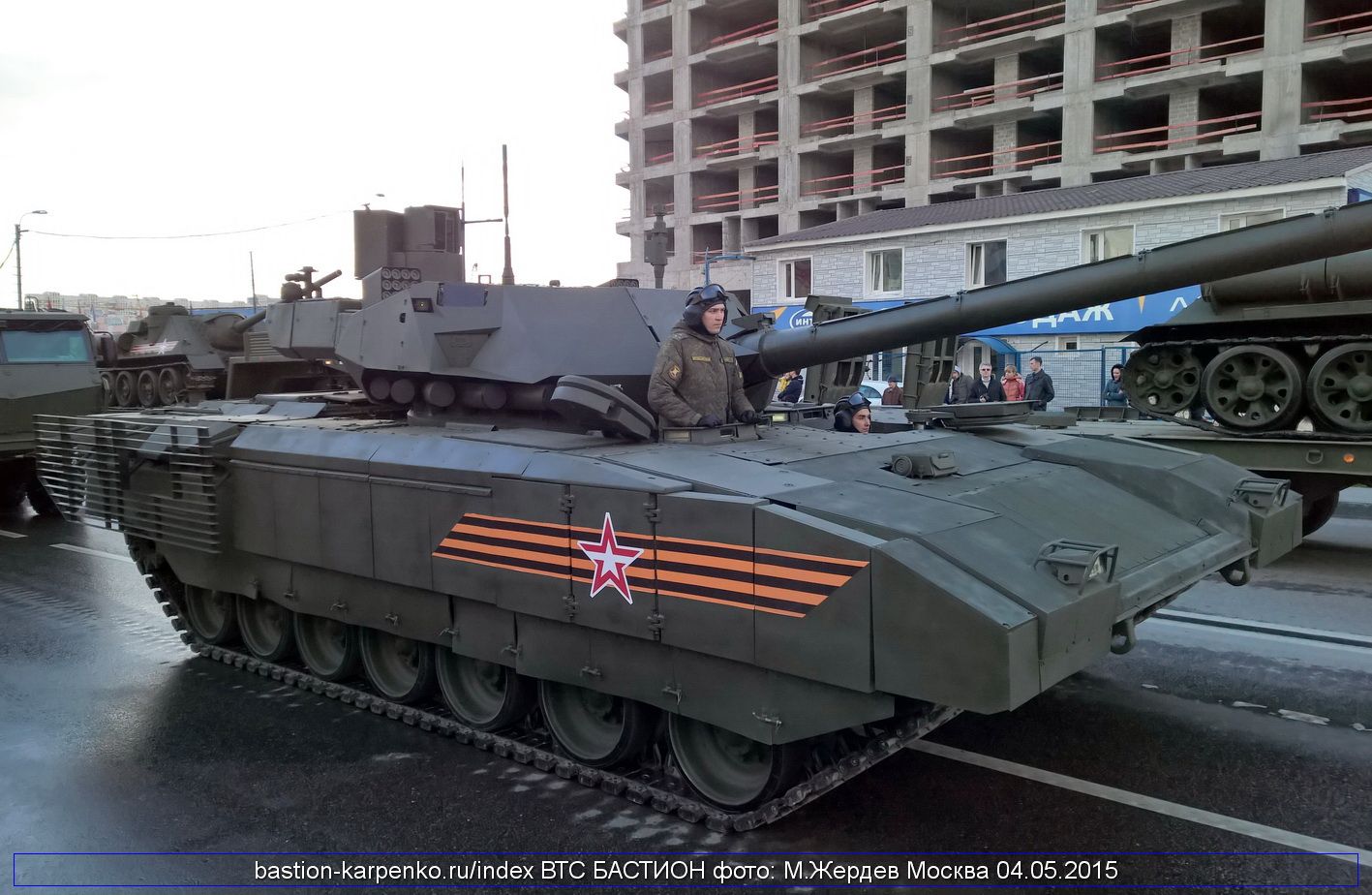
LINK - http://bastion-karpenko.ru/new-tehnik-parad-150504/
SOUTH CHINA SEA (May 1, 2015) An MQ-8B Fire Scout unmanned aircraft system from Helicopter Maritime Strike Squadron (HSM) 35 performs ground turns aboard the littoral combat ship USS Fort Worth (LCS 3). Fort Worth is on a 16-month rotational deployment in support of the Indo-Asia-Pacific Rebalance. (U.S. Navy photo by Mass Communication Specialist 2nd Class Conor Minto/Released)
Germany,
First Leopard 2A7s in German Army service, Tank Bataillon 203, Augustdorf.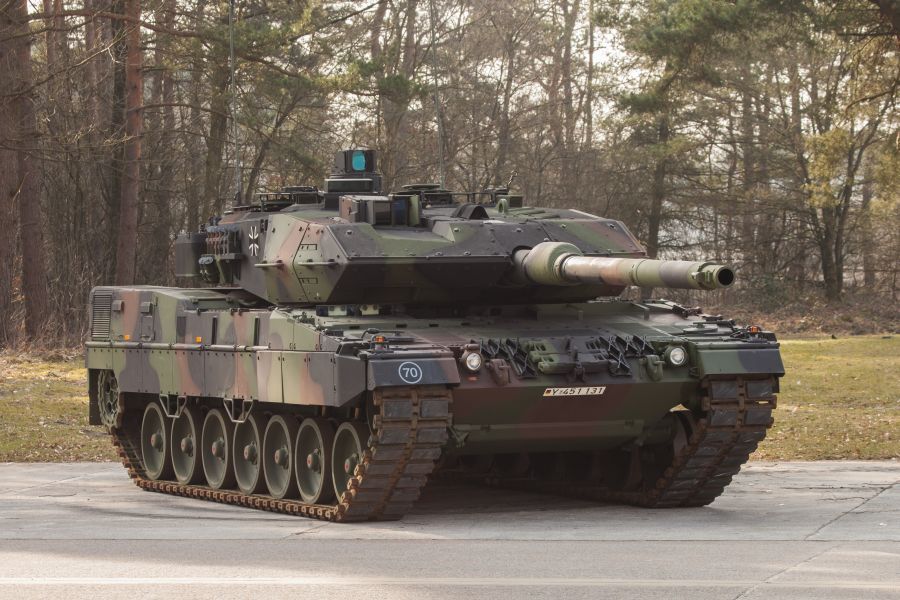
House panel blocks A-10 retirement.
LINK - http://www.defensenews.com/story/military/2015/04/30/house-armed-services-markup-keeps-a10/26627591/
-
9 years agoWed May 06 2015, 01:13pm
 Main AdminA U.S. Air Force F-16 Fighting Falcon from the 354th Fighter Wing at Eielson Air Force Base, Alaska, flies during a morning sortie while participating in the second week of Red Flag-Alaska (RF-A) 15-2. RF-A is a joint and coalition, tactical air combat employment exercise which enhances the operational capability of participating units. (U.S. Air Force photo by Staff Sgt. Shawn Nickel/Released)
Main AdminA U.S. Air Force F-16 Fighting Falcon from the 354th Fighter Wing at Eielson Air Force Base, Alaska, flies during a morning sortie while participating in the second week of Red Flag-Alaska (RF-A) 15-2. RF-A is a joint and coalition, tactical air combat employment exercise which enhances the operational capability of participating units. (U.S. Air Force photo by Staff Sgt. Shawn Nickel/Released)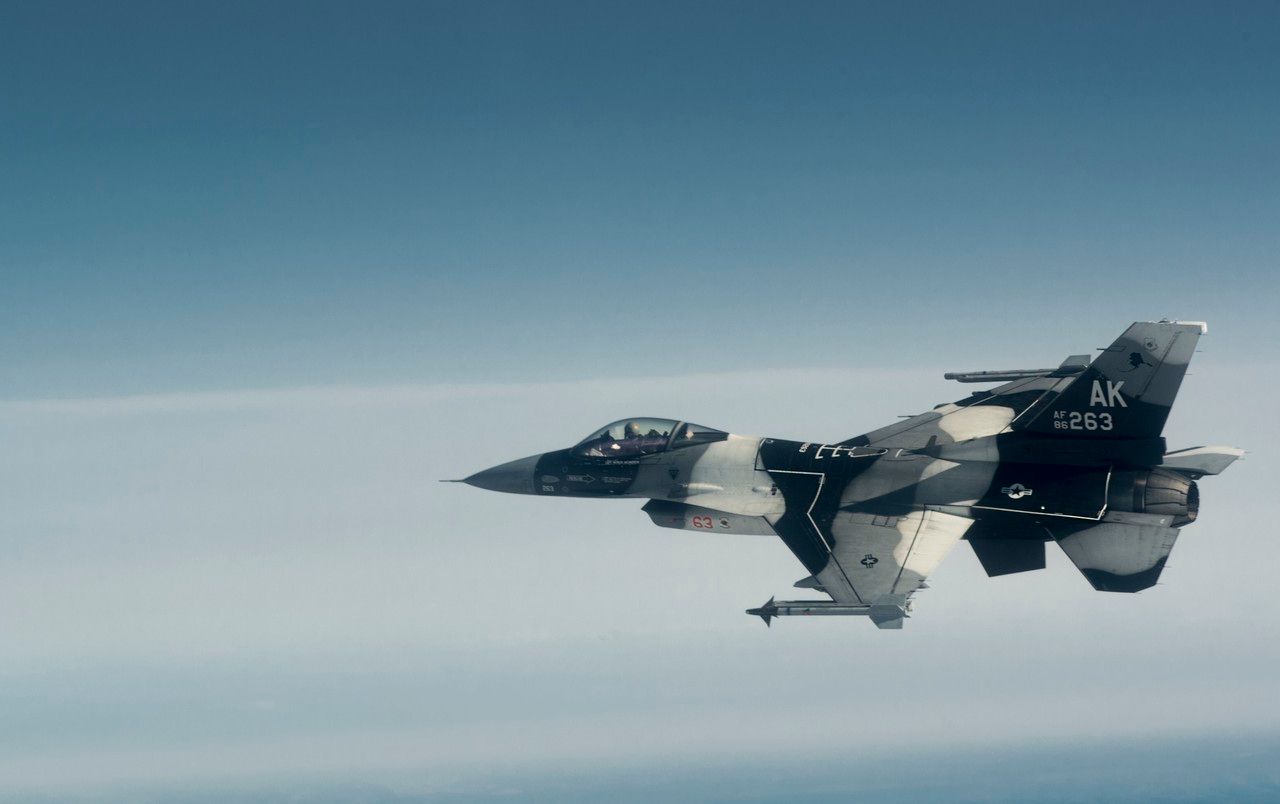
A U.S. Air Force F-16 Fighting Falcon from the 354th Fighter Wing at Eielson Air Force Base, Alaska, is refueled by a U.S. Air Force KC-135 Stratotanker from Fairchild Air Force Base, Wash., May 4, 2015, during Red Flag-Alaska 15-2. The KC-135 Stratotanker provides the core aerial refueling capability for the U.S. Air Force, allowing aircraft to linger in airspace during exercises and contingency and humanitarian operations. (U.S. Air Force photo's by Staff Sgt. Shawn Nickel/Released)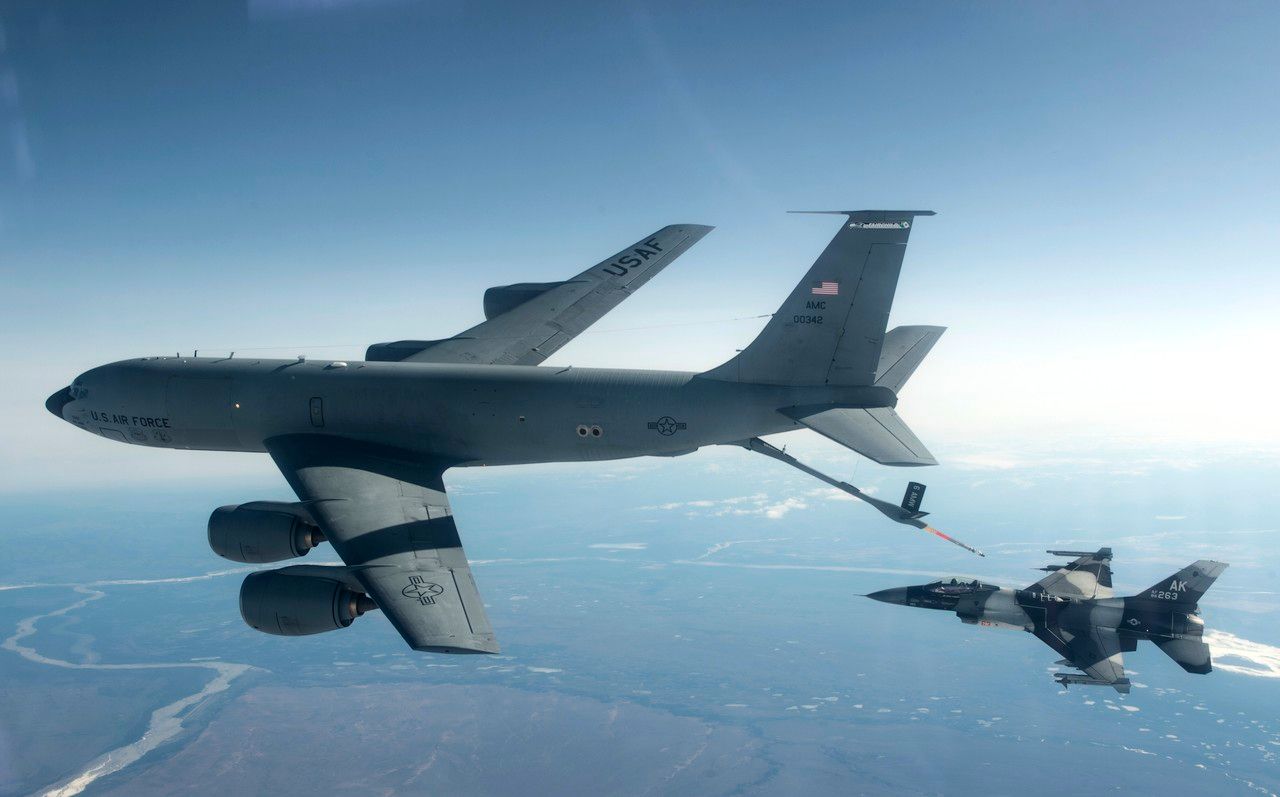
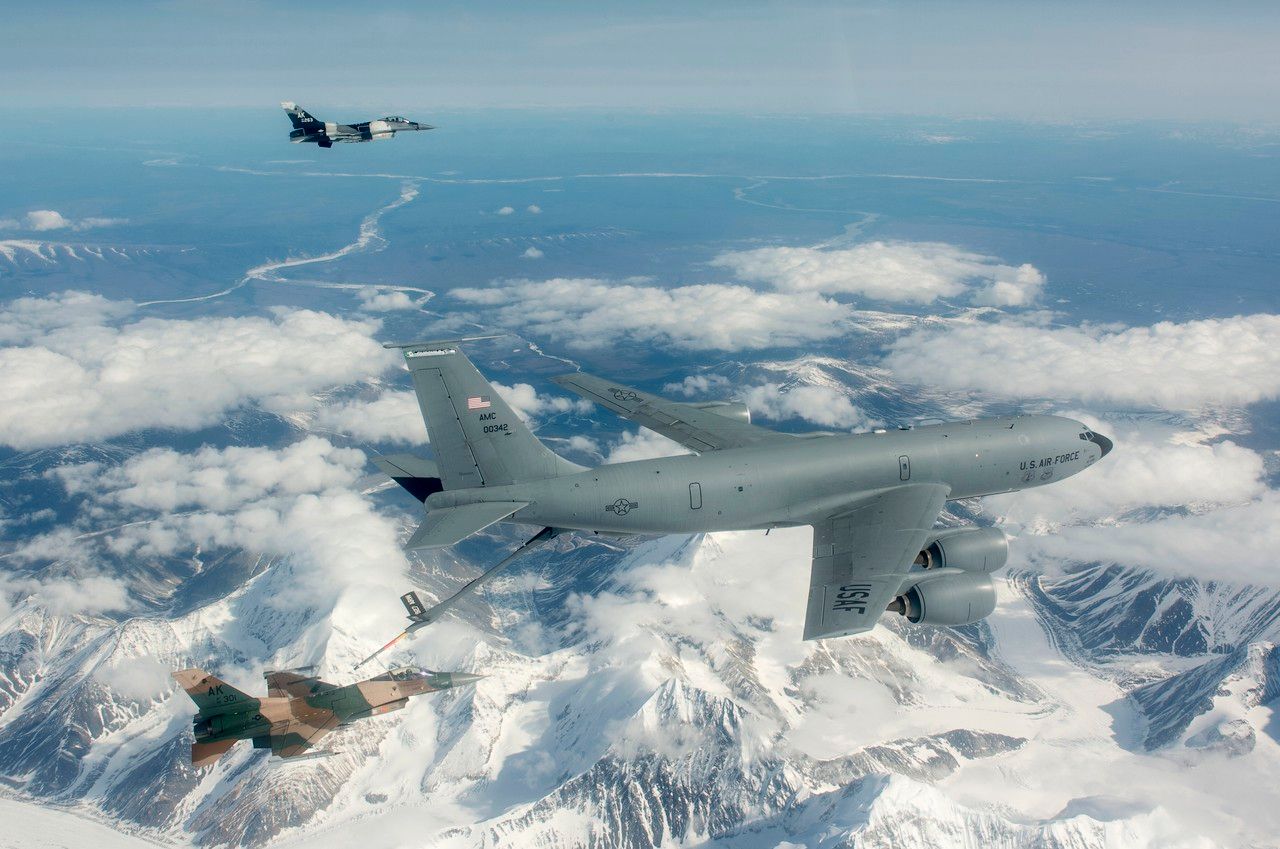
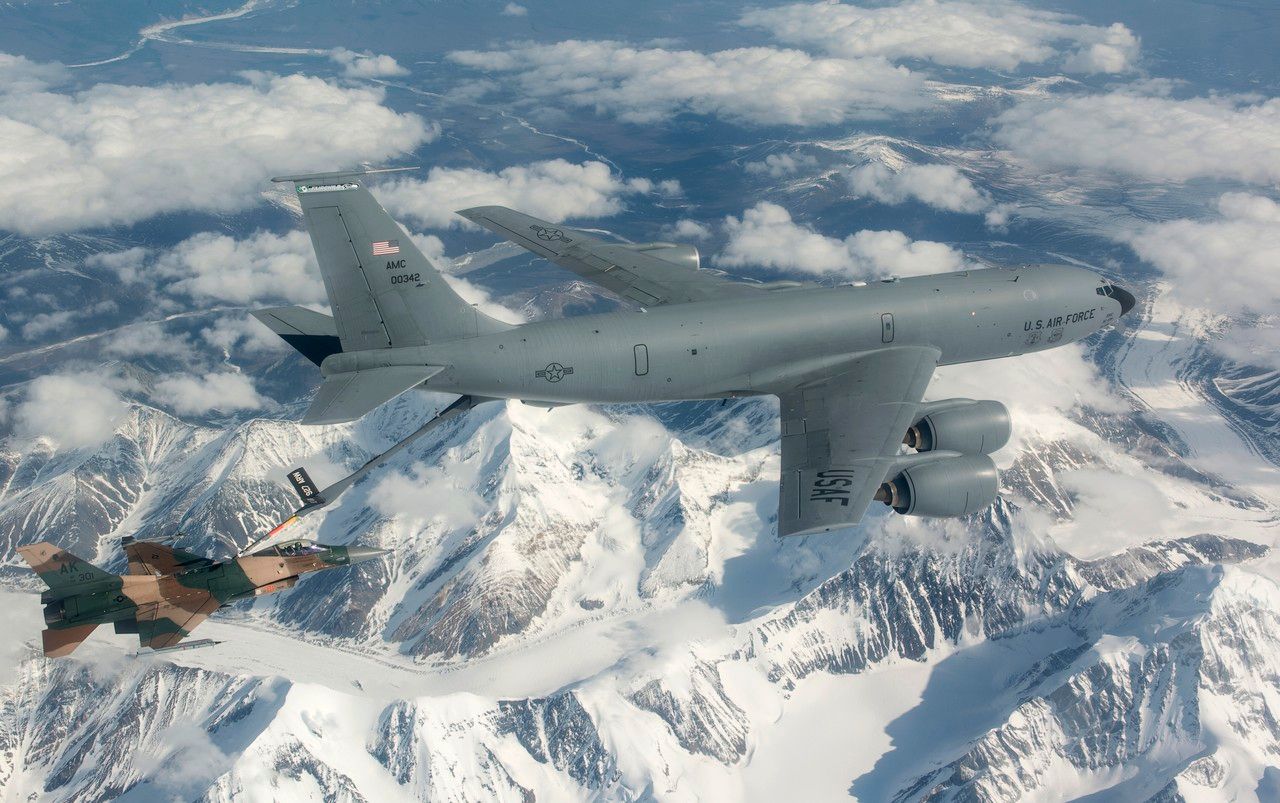
OREM, Utah, May 4, 2015 ? Disaster relief missions require a rapid and safe response under harsh conditions. When roads are unavailable, and infrastructure is unstable, unmanned systems can provide valuable damage assessment intelligence without putting further strain on the limited ground and aviation assets available to the response effort. Following the devastation of Cyclone Pam, the Vanuatu Government and the World Bank contacted Australian operator Heliwest, who deployed Lockheed Martin?s (NYSE: LMT) Indago small unmanned aerial system (UAS) to conduct a rapid damage assessment. The Indago collected imagery of the damage over a two week mission and provided the data to operators, without risking a life.
?Cyclone Pam caused a huge amount of damage and devastation across Vanuatu,? said Michael Bonte-Grapentin, senior disaster risk management specialist for the World Bank Group. ?To be able to direct support where it?s needed most, the Government of Vanuatu, with input from the World Bank and other partners, is developing a post disaster needs assessment. The rapid damage assessments provided by Heliwest offered much-needed information about areas that were damaged by Cyclone Pam, often where ground access is limited and challenging. These images will help inform the Government of Vanuatu in progressing their disaster response activities.?
Indago provides operators with an immediate eye-in-the-sky that is capable of providing 360-degree surveillance of an area. Weighing only five pounds, the Indago has an endurance of more than 45 minutes at a range up to 3 miles (5 km) when using its handheld controller. It does not require large bulky cases or specialized transport; rather, it is simply carried in a single backpack with everything required to operate the system.
?In the wake of Cyclone Pam, the Indago was able to navigate through the destruction and provide an accurate picture of damaged property and assets,? said Jay McConville, director of business development for Unmanned Integrated Solutions at Lockheed Martin Mission Systems and Training. ?The Indago can work day and night to augment disaster relief efforts and humanitarian aid missions to help save lives and begin the recovery process.?
?The Indago proved to be the ideal platform for the mission because of its flexibility and small logistics footprint,? said Luke Aspinall, manager of special operations for Heliwest. ?Heliwest operators were able to deploy a full system by commercial flight with no further support required, while on the ground the Indago allowed us to remain independent and mobile. Our crew were able to get to where we were needed quickly, deploying by a number of methods during the mission including police patrol boats, zodiacs, quadbikes, cars, four-wheel drives, regional flights and light helicopters.?
Once deployed, the Indago provided Heliwest operators the capability of several different systems in one package, said Aspinall. Operators could field a mapping capability with similar coverage of a larger fixed wing system due to the Indago?s endurance and weather tolerances ? without the requirement for large clear areas for launch and recovery.
?With the simple change of a payload, we could provide a stable, high resolution video and oblique imaging with a vertical takeoff and lift capability all in the one package,? said Aspinall. ?Pairing a true multirole UAS rugged enough to operate in almost all weather with an experienced and professional aviation solutions provider was the ideal solution to a challenging environment like Vanuatu.?
TOWNSVILLE, Queensland, Australia, May 6, 2015
At a ceremony yesterday at Royal Australian Air Force Base Townsville in northern Queensland, Australia commissioned their first two Boeing [NYSE: BA] CH-47F Chinook advanced configuration aircraft. It?s a major milestone in the updating of the Australian Army?s cargo helicopter fleet.
The acquisition is part of an ongoing transformation that?s allowing Australia to build one of the world?s newest and most technologically advanced armed forces. Five additional new Chinooks will be delivered this year, eventually replacing an existing fleet of six older CH-47D Chinooks.
?The outgoing CH-47D Chinooks have proved highly effective in Australian operations, and the new CH-47F Chinook will deliver an improved cargo helicopter for Australia?s Army,? said Rear Admiral Tony Dalton of Australia?s Defence Materiel Organisation. ?Furthermore, the project to deliver the new Chinooks remains on schedule and under budget.?
Australia was among the Chinook?s first international customers and now there are almost twenty countries operating the helicopter.
?Working with our Australian allies to build a modernised Chinook fleet enables more seamless operations with U.S. and other forces,? said Col. Robert Barrie, project manager, U.S. Army Cargo Helicopter Office.
?The Australian Army values the features and capabilities of the advanced CH?47F Chinook and we delivered them as promised,? said Steve Parker, Boeing vice president, Cargo Helicopters and H-47 program manager. ?These aircraft will meet their demanding mission requirements now and well into the future.?
The Australian Chinook fleet is flown by the Army?s 5th Aviation Regiment, 16th Aviation Brigade. Under the scope of the contract, Boeing Defence Australia will provide delivery and on-site operational maintenance support to the seven aircraft.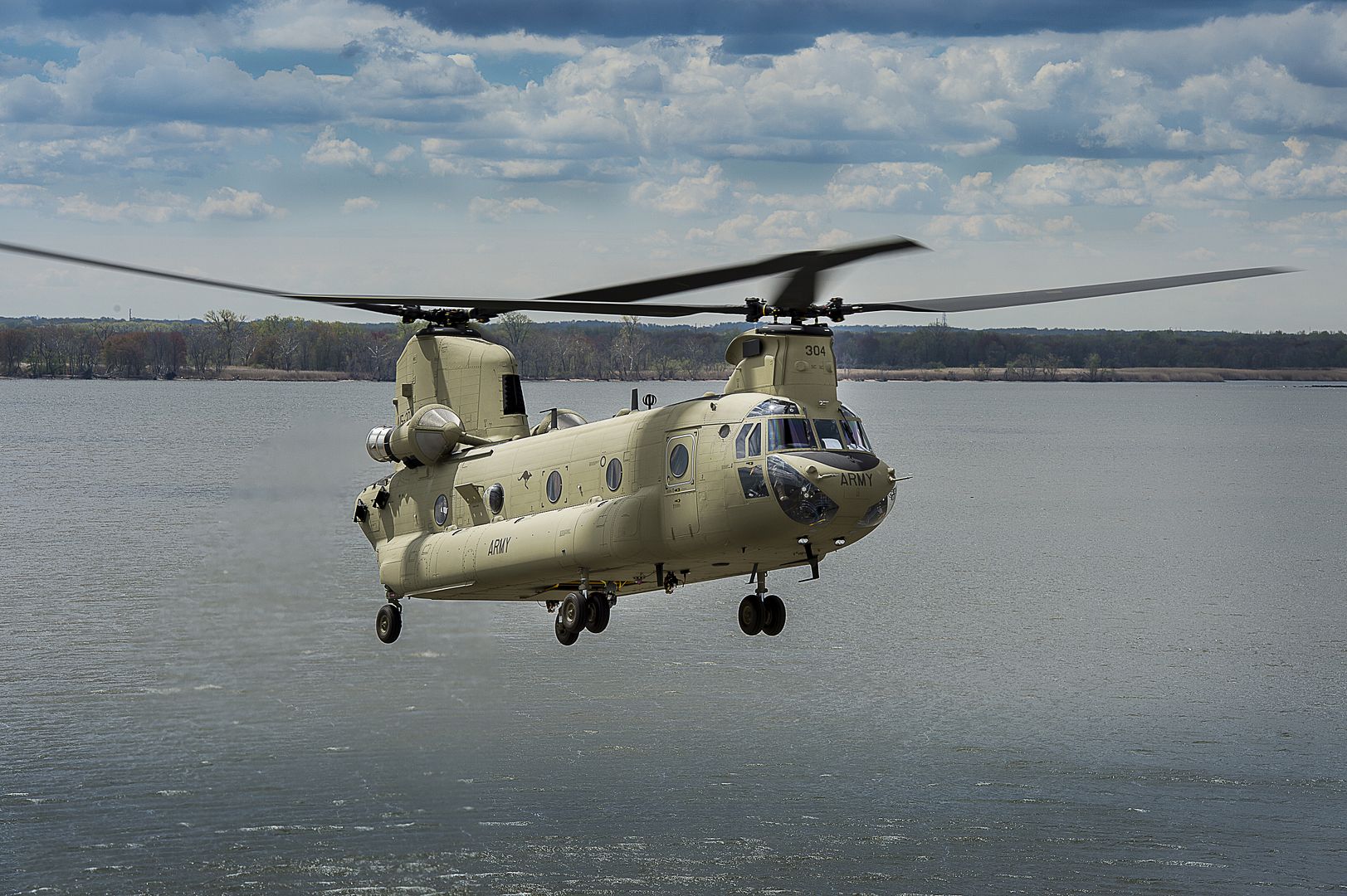
5 May 2015 Press Release
Following a Memorandum of Understanding (MoU) announcement in February, Avianca has signed a purchase agreement for 100 A320neo Family aircraft, the largest single order ever made in Latin America?s aviation history. The agreement, which includes A319neo, A320neo and A321neo aircraft, will allow Avianca to maintain one of the youngest fleets in the region as the airline aims to replace airplanes currently operating from their Bogota, Lima and San Salvador hubs.
?This historic order allows us to solidify our passenger experience strategy in local markets on a broader scale,? said Fabio Villegas Ramirez, Avianca Chief Executive Officer. ?Thanks to the A320neo Family?s fuel efficiency, technical reliability and unique passenger comfort, we can further Avianca?s fleet modernization process, while connecting the region and supporting its development.?
?For over 15 years, Avianca has benefitted from the excellent operating economics and award-winning reliability of the A320 Family,? said John Leahy, Airbus Chief Operating Officer, Customers. ?The A320neo brings Avianca the highest efficiency at the lowest cost, making it ideally suited to operate within their network and especially within the region?s challenging airports.?
Established in Colombia in 1919, Avianca was the first airline in the Americas, and is the second oldest airline in the world. The Airbus-Avianca partnership was taken to a new level in 1998 when TACA (now part of Avianca), LAN, and TAM placed a joint order for 90 single-aisle aircraft. This was the largest joint contract ever signed in Latin American commercial aviation history. To date, the Avianca airline group has ordered nearly 300 aircraft including 276 A320 Family (among them, 133 A320neo Family) and 15 A330 Family.
-
9 years agoThu May 07 2015, 07:48pm
 Main AdminU.S. Air Force F-16 Fighting Falcon's assigned to the 13th Fighter Squadron, Misawa Air Base, Japan, launches for a training sortie May 6, 2015, during Red Flag-Alaska (RF-A) 15-2 at Eielson Air Force Base, Alaska. RF-A enables units from around the globe to conduct live-fire training, utilizing more than 67,000 square miles of airspace over the Joint Pacific Alaska Range Complex. (U.S. Air Force photo's by Senior Airman Peter Reft/Released)
Main AdminU.S. Air Force F-16 Fighting Falcon's assigned to the 13th Fighter Squadron, Misawa Air Base, Japan, launches for a training sortie May 6, 2015, during Red Flag-Alaska (RF-A) 15-2 at Eielson Air Force Base, Alaska. RF-A enables units from around the globe to conduct live-fire training, utilizing more than 67,000 square miles of airspace over the Joint Pacific Alaska Range Complex. (U.S. Air Force photo's by Senior Airman Peter Reft/Released)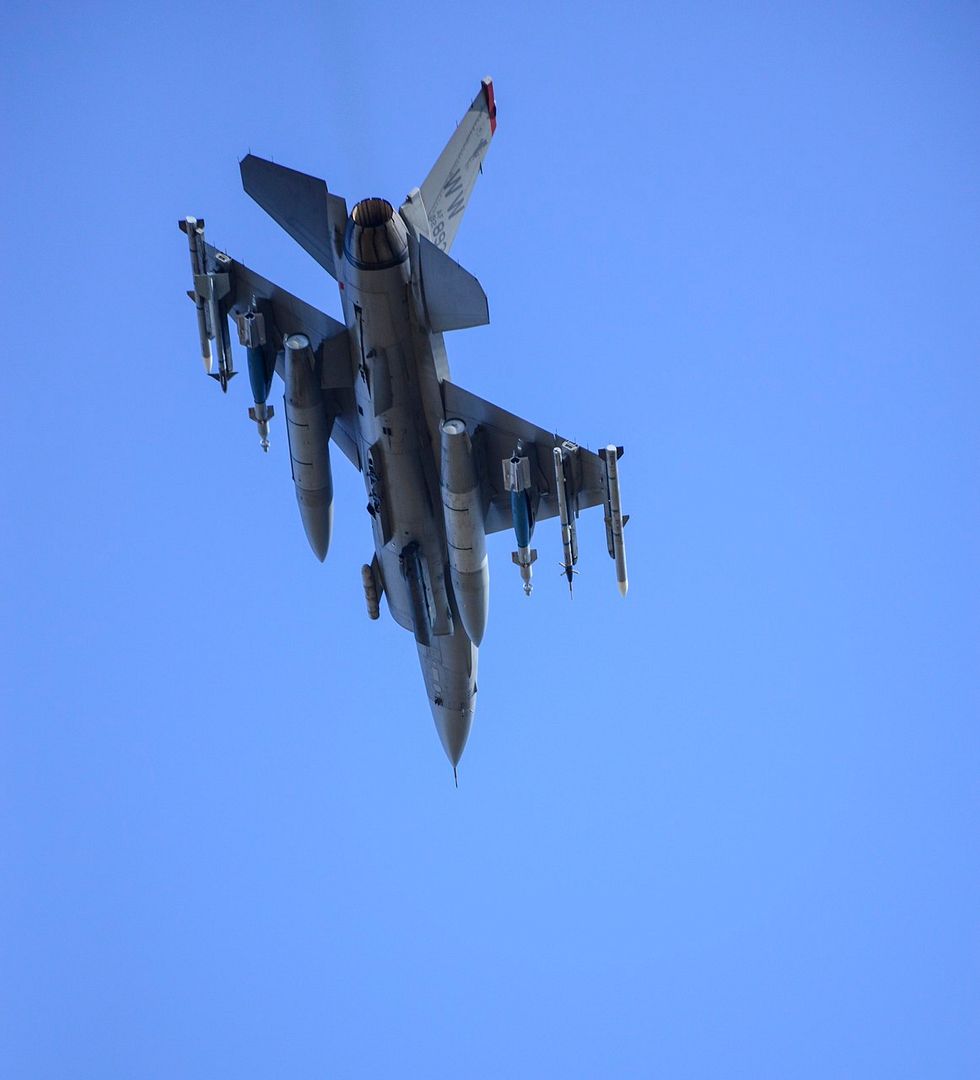

FALLON, Nev. (April 29, 2015) F-5 Tiger II's attached to the Saints of Fighter Squadron Composite (VFC) 13 land on Naval Air Station (NAS) Fallon. (U.S. Navy photo's by Mass Communication Specialist 1st Class Joseph R. Vincent/Released)

Eglin AFB, Florida // May 06, 2015
Lt. Col. Christine Mau, 33rd Fighter Wing Operations Group deputy commander, completed her first training flight in the single-seat fifth-generation fighter following 14 virtual training missions in the Full Mission Simulator at the F-35 Academic Training Center.
?It wasn?t until I was taxiing to the runway that it really struck me that I was on my own in the jet,? said Mau, formerly an F-15E Strike Eagle pilot. ?I had a chase aircraft, but there was no weapons system officer or instructor pilot sitting behind me, and no one in my ear like in simulators.?
And with that, like the other 87 F-35A pilots trained over the last four years at Eglin, Mau thundered down the runway and was airborne as the first woman in the Air Force?s premier fighter.
?It felt great to get airborne. The jet flies like a dream, and seeing the systems interact is impressive. Flying with the Helmet Mounted Display takes some adjusting, but it?s an easy adjustment,? said Mau. ?The training missions in the simulator prepare you very well, so you?re ready for that flight.?
The initial flight in the F-35 training syllabus is designed to orient pilots with the physical aspects of flying the F-35 compared to other fighters they?ve flown previously, such as the F-15E Strike Eagle, F-15C Eagle, F-16 Falcon, A-10 Warthog or F-22 Raptor.
Women have served in combat aviation roles in those and other aircraft for more than 20 years.
Mau acknowledged that although she may be the first female in the F-35 program, her gender has no bearing on her performance as a fighter pilot.
Mau joked that the only difference between her and her fellow F-35 pilots is the size of her G-suit and facemask.
They are both extra-small.
?Flying is a great equalizer,? said Mau. ?The plane doesn?t know or care about your gender as a pilot, nor do the ground troops who need your support. You just have to perform. That?s all anyone cares about when you?re up there ? that you can do your job, and that you do it exceptionally well.?
Mau?s combat experience and technical prowess in the cockpit were the primary draws for her selection to her position with the 33rd Operations Group.
?Lt. Col. Mau brings a valuable level of combat and operational knowledge to our team,? said Col. Todd Canterbury, 33rd Fighter Wing commander. ?We?re nearly a year out from declaring Initial Operational Capability with the F-35. We need battle-tested pilots to help us put the F-35A through its paces and ensure we have a trained and ready force of F-35 pilots to feed into our combat air forces.?
Canterbury witnessed Mau?s leadership and combat effectiveness first-hand when they were both deployed to Afghanistan in 2011, where she was part of another important milestone for women in the combat aviation community.
While with the 389th Expeditionary Fighter Squadron, Mau was part of the first all-female combat sortie. The combat mission provided air support to coalition and Afghan forces in the Kunar Valley, Afghanistan. From the pilots and weapons system officers of the two F-15E jets to the mission planners and maintainers, the entire mission was carried out entirely by women.
???As a service, we need to attract the most innovative and skillful Airmen possible for one reason ? it makes us more effective,? said Canterbury. ?The broader the net that we cast into the talent pool, coupled with a laser focus on performance, ensures we have the best Airmen in place to carry out the mission. Performance is key, and it?s the standard we hold all of our Airmen to in the Air Force,? said Canterbury.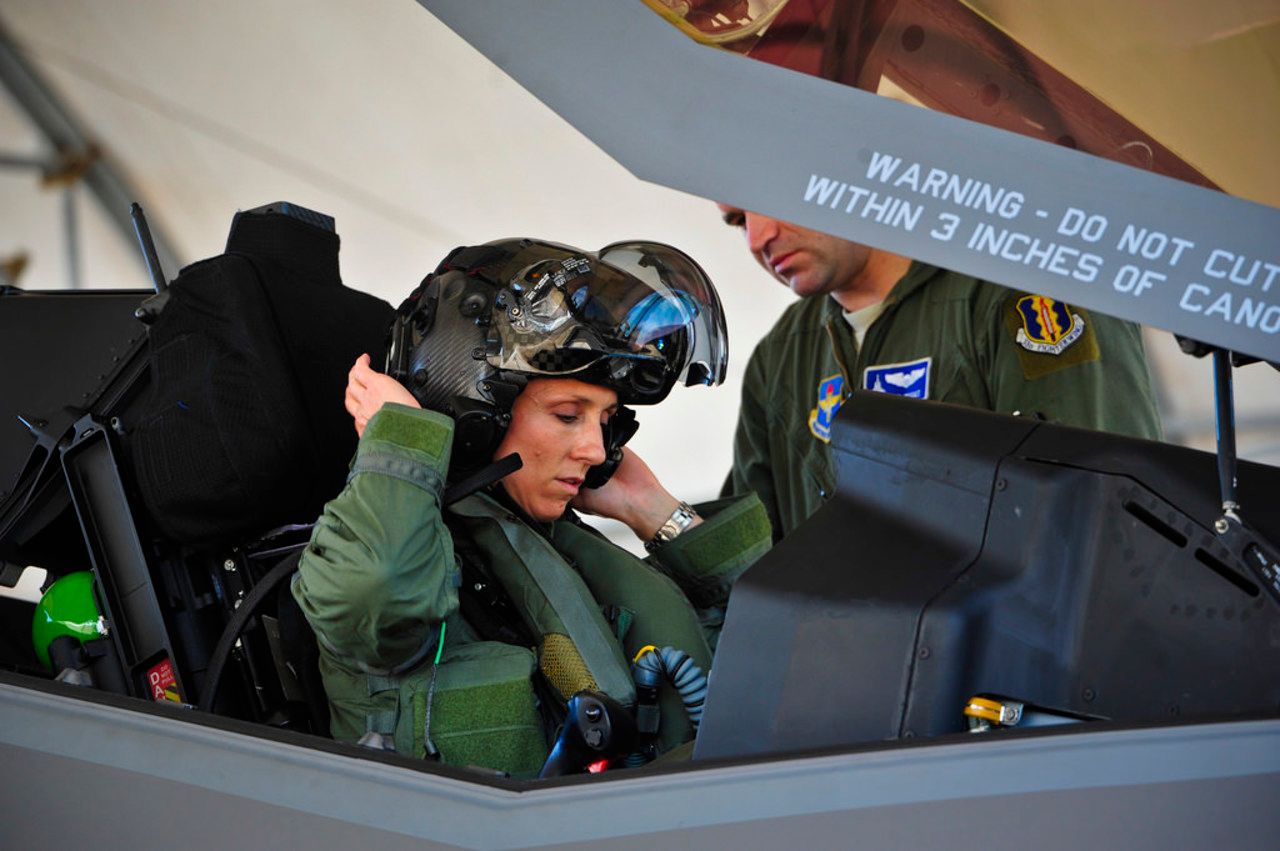
Lt. Col. Christine Mau, 33rd Operations Group deputy commander, navigates her F-35A through the ?bird bath? after returning from her first flight on Eglin Air Force Base, Fla., May 5, 2015. Mau, who previously flew F-15E Strike Eagles, made history as the first female F-35 pilot in the program. (U.S. Air Force photo/Staff Sgt. Marleah Robertson)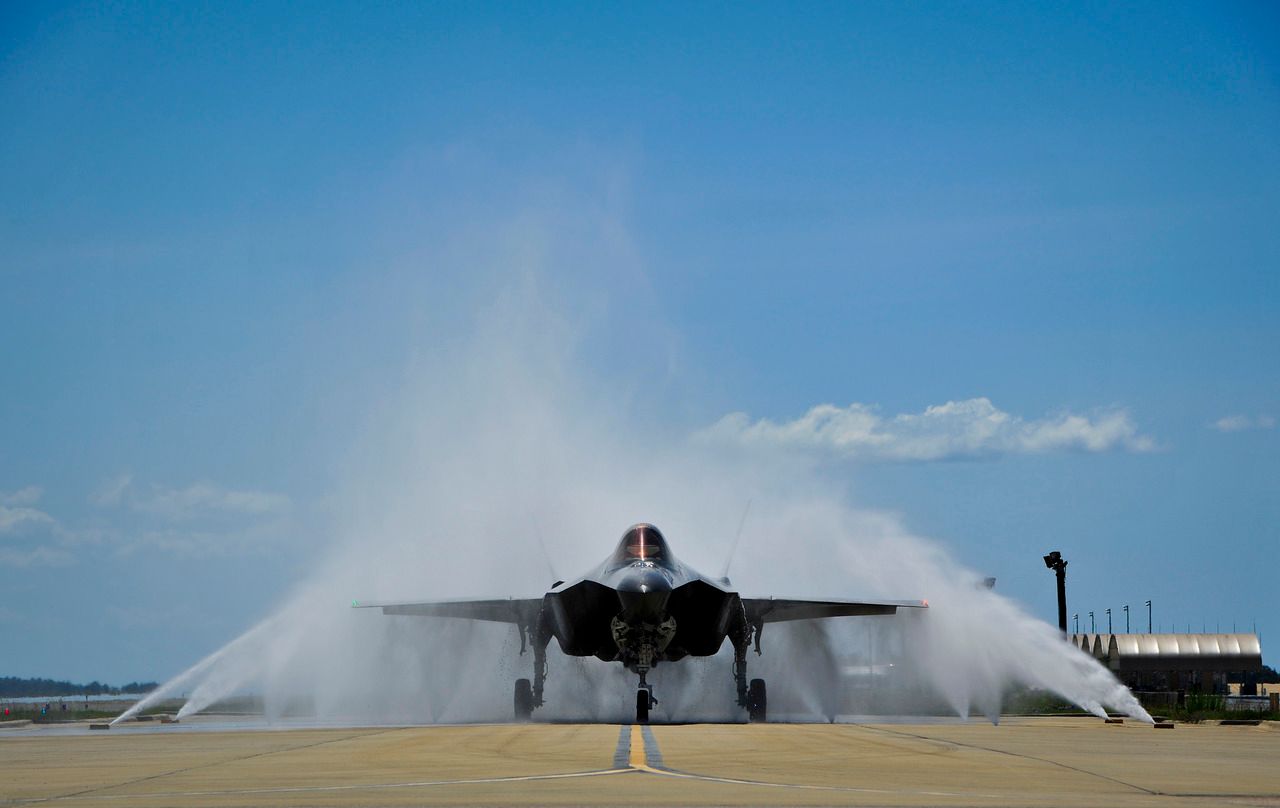
92-year-old World War Two veteran flies Spitfire again
LINK - http://www.bbc.co.uk/programmes/p02qt65y

-
9 years agoFri May 08 2015, 03:41pm
 Main AdminRENTON, Wash., May 7, 2015 /PRNewswire/ -- Boeing [NYSE: BA] and CFM International announced today that they successfully initiated flight testing of the LEAP-1B* engine on April 29 on a modified 747 flying testbed at GE Aviation Flight Test Operations in Victorville, Calif.
Main AdminRENTON, Wash., May 7, 2015 /PRNewswire/ -- Boeing [NYSE: BA] and CFM International announced today that they successfully initiated flight testing of the LEAP-1B* engine on April 29 on a modified 747 flying testbed at GE Aviation Flight Test Operations in Victorville, Calif.
The testing is the next major milestone in a two-year program that will culminate in engine certification in 2016 and delivery of the first Boeing 737 MAX in 2017. The engine performed well and completed multiple aeromechanical test points at various altitudes during the five hour, 30 minute first flight.
"I continue to be really impressed with the LEAP," said Chief Test Pilot Steven Crane, CFM International. "These engines are demonstrating a maturity that you don't always see in new products. I think our airline customers are going to be very pleased with this engine."
The LEAP-1B engine is the exclusive powerplant for the Boeing 737 MAX family and is part of the most extensive ground and flight test certification program in CFM's history. The first LEAP-1B engine began ground testing on June 13, 2014, three days ahead of the schedule set when the program was launched in 2011.
"With this major engine milestone and the test results to date, we continue to be confident that the LEAP-1B-powered 737 MAX will provide our customers with the most fuel efficient, reliable and maintainable airplane in the single-aisle market," said Keith Leverkuhn, vice president and general manager, 737 MAX program, Boeing Commercial Airplanes. "The 737 MAX is on track to deliver 14 percent more fuel efficiency than today's most efficient Next-Generation 737s and 20 percent more efficiency than the first Next-Generation 737s to enter service."
Over the next several weeks, the flight test program will encompass a comprehensive test schedule that will gauge engine operability, stall margin, performance, emissions and acoustics. It also will further validate the advanced technologies incorporated in the engine, including the woven carbon fiber composite fan, the Twin-Annular, Pre-Mixing Swirler (TAPS) combustor, ceramic matrix composite shrouds in the high-pressure turbine and titanium aluminide blades in the low-pressure turbine.
"The LEAP engine has been doing incredibly well throughout a very rigorous ground and flight test program," said Allen Paxson, executive vice president, CFM International. "Results to date are right in line with what we predicted and where we wanted this engine to be."
The only airworthy Lancaster bomber in the UK has suffered an engine fire while flying.
The Battle of Britain Memorial Flight (BBMF) Lancaster - known as Thumper - landed safely at RAF Coningsby after it misfired during a training flight.
The crew evacuated safely and the aircraft will now be assessed by engineers.
Last year, the only other flying Lancaster had an engine fire whilst visiting the UK.
Sqd Ldr Emma Watkins said: "The Lancaster suffered what appears to be an engine fire during a practice run this afternoon.
"The aircraft has landed safely and all the crew are fine."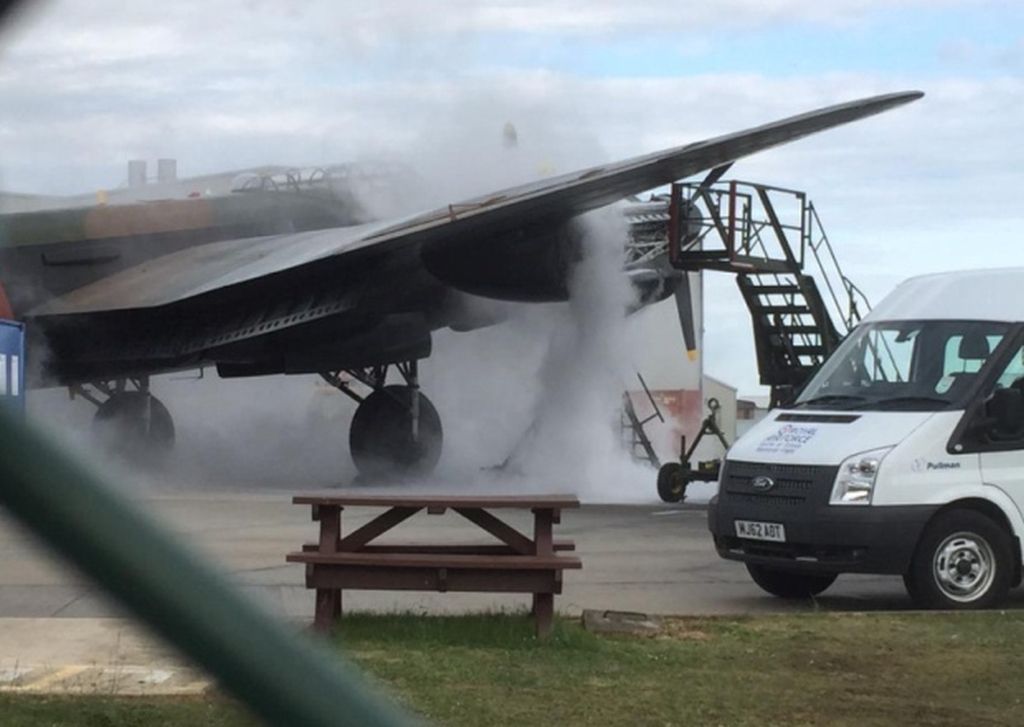
On May 7, 2015, the AN?178 new transport, created by ANTONOV in cooperation with partners from 15 countries, performed maiden flight.
The first 1 hour duration flight performed a crew of ANTONOV test pilots, composed of: Andrii Spasibo, test pilot of the 1st class ? the crew captain, Sergii Troshyn, test pilot of the 1st class, Hero of Ukraine ? the 2nd pilot, Mykola Sydorenko, leading test engineer. After landing in Kyiv?Antonov airport (Gostomel) the crew reported on a successful flight task realization to Dmytro Kiva, President ? General Designer.
Pres?service of ANTONOV Company, May 7, 2015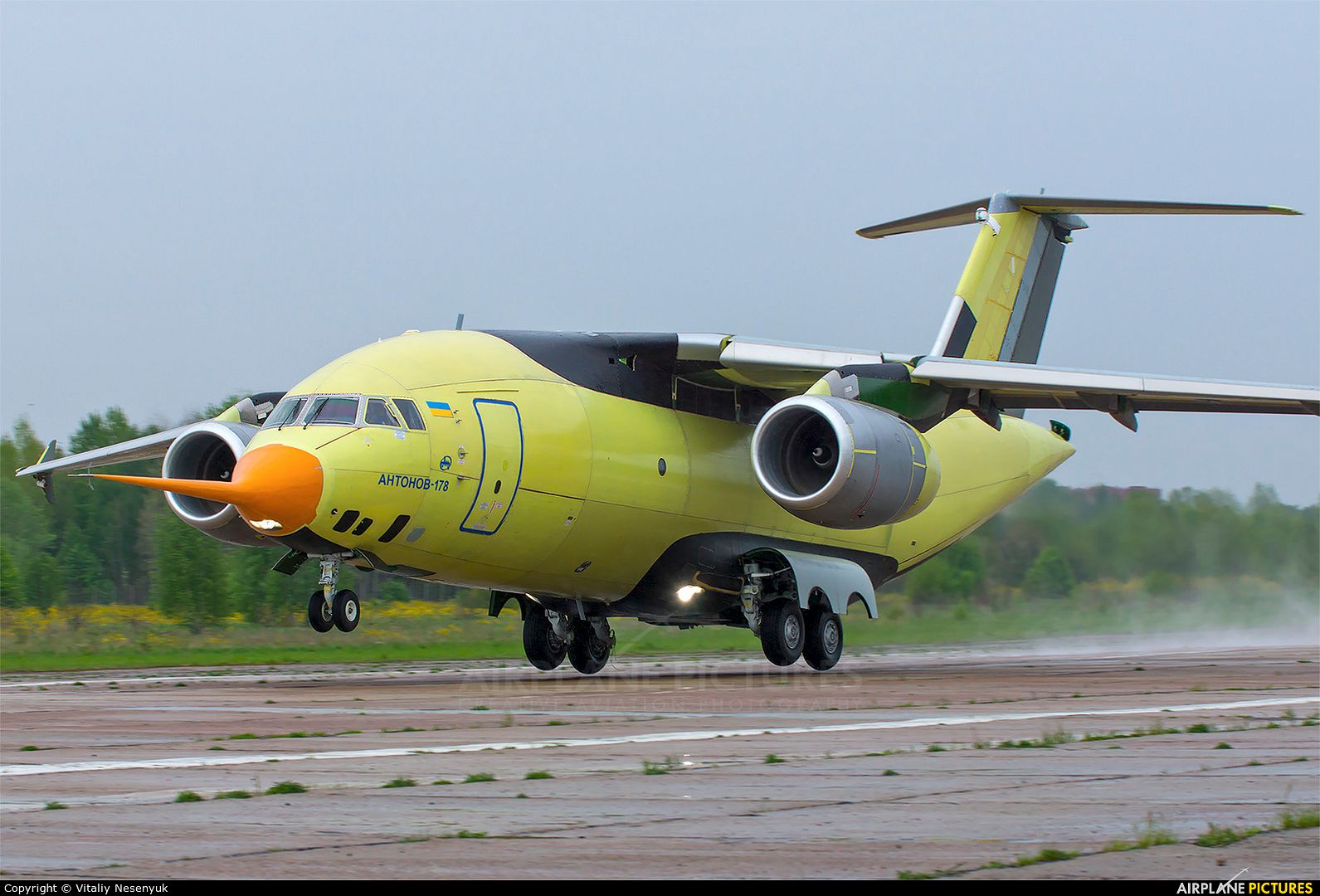
-
9 years agoTue May 12 2015, 02:51pm
 Main AdminSOUTH CHINA SEA (May 10, 2015) An F/A-18E Super Hornet and a Royal Malaysian Air Force SU-30MKM/Flanker H, fly in formation above aircraft carrier USS Carl Vinson (CVN 70) during a bi-lateral exercise aimed at developing and enhancing security ties and partnerships with the Malaysian Royal Military. Carl Vinson Strike group is deployed to 7th Fleet area of operations supporting security and stability in the Indo-Asia-Pacific region. (U.S. Navy photo by Lieutenant Jonathan Pfaff/Released)
Main AdminSOUTH CHINA SEA (May 10, 2015) An F/A-18E Super Hornet and a Royal Malaysian Air Force SU-30MKM/Flanker H, fly in formation above aircraft carrier USS Carl Vinson (CVN 70) during a bi-lateral exercise aimed at developing and enhancing security ties and partnerships with the Malaysian Royal Military. Carl Vinson Strike group is deployed to 7th Fleet area of operations supporting security and stability in the Indo-Asia-Pacific region. (U.S. Navy photo by Lieutenant Jonathan Pfaff/Released)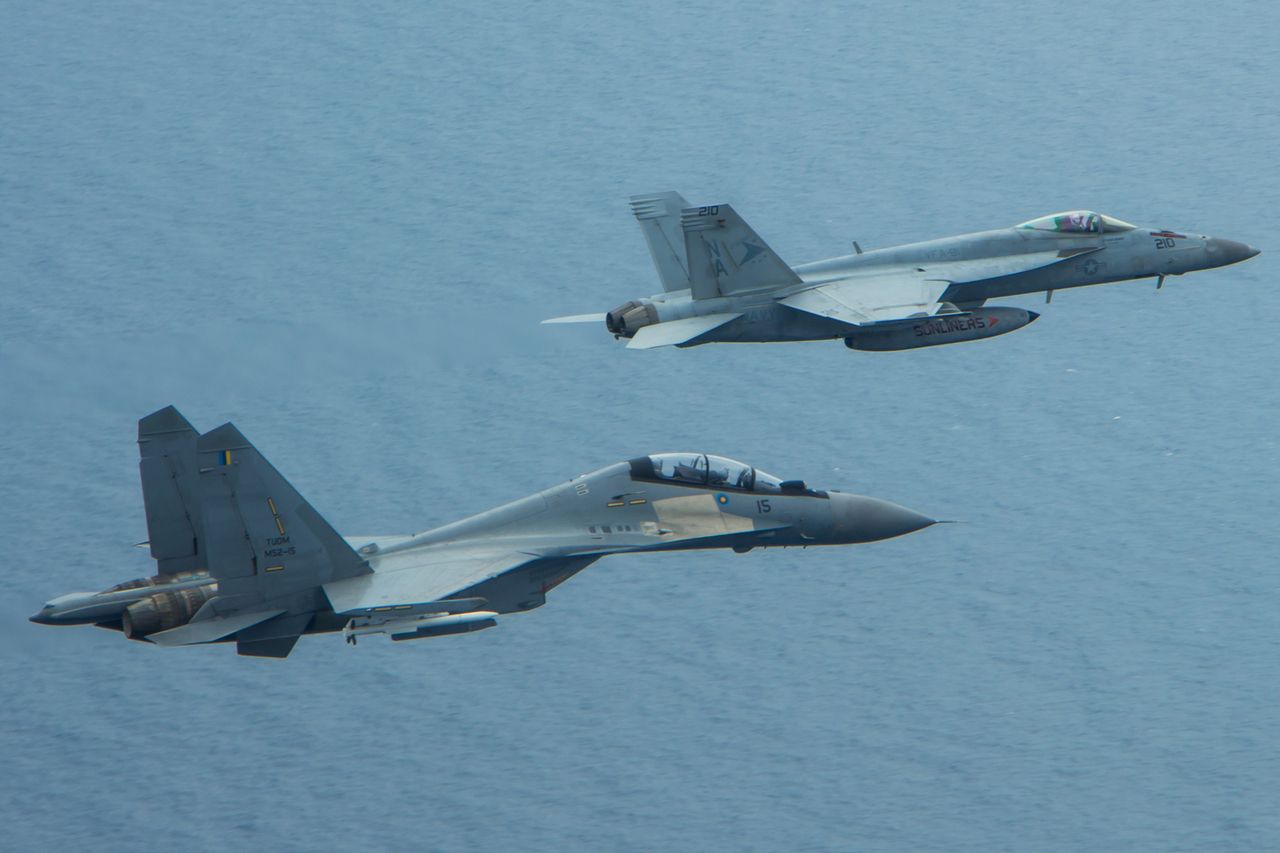
SOUTH CHINA SEA (May 10, 2015) A Royal Malaysian Air Force SU-30MKM/Flanker H, flies above aircraft carrier USS Carl Vinson (CVN 70) during a bi-lateral exercise aimed at promoting interoperability with the Malaysian Royal Military. Carl Vinson Strike group is deployed to 7th Fleet area of operations supporting security and stability in the Indo-Asia-Pacific region. (U.S. Navy photo by Lieutenant Jonathan Pfaff/Released)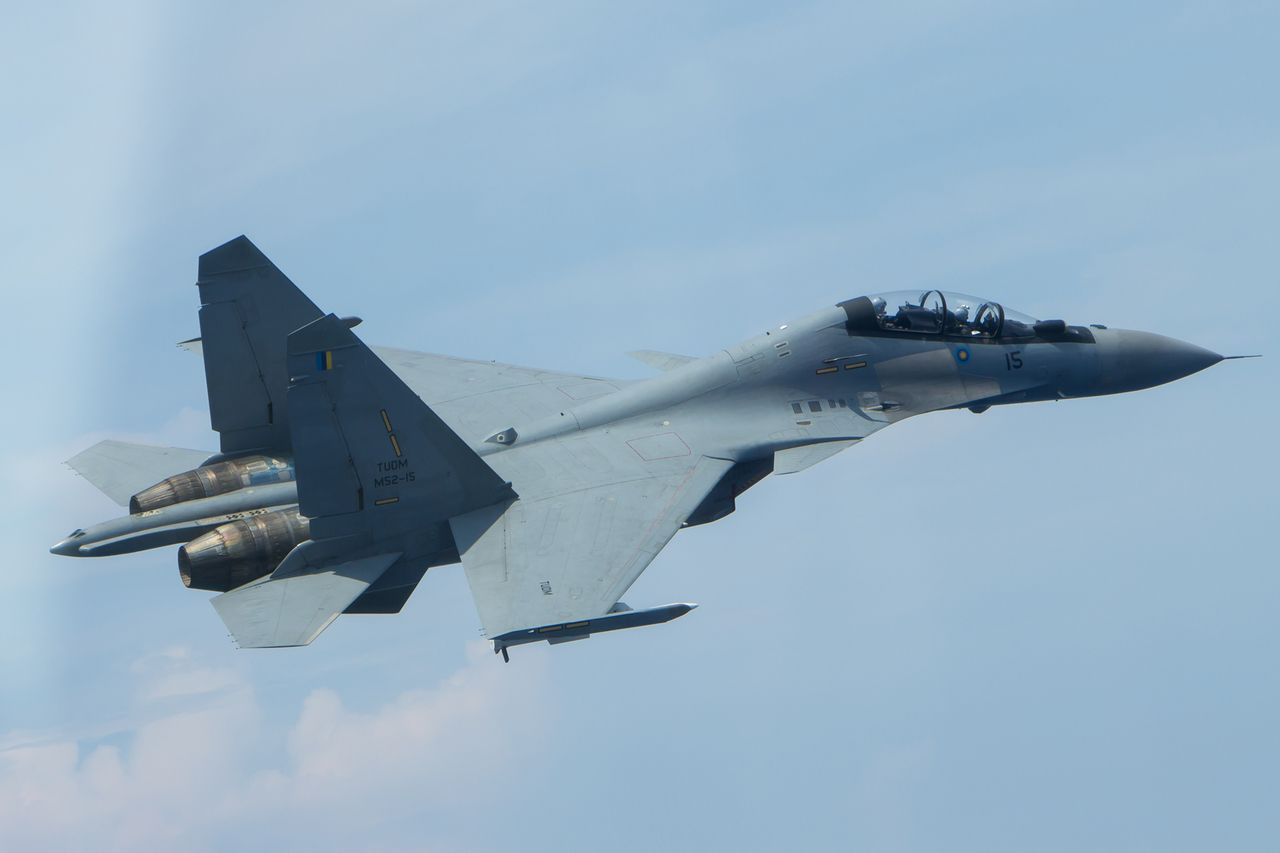
SOUTH CHINA SEA (May 10, 2015) Two F/A-18 Super Hornets and two Royal Malaysian Air Force SU-30MKM/Flanker H, fly in formation above aircraft carrier USS Carl Vinson (CVN 70) during a bi-lateral exercise promoting the longstanding military-to-military cooperation efforts between the U.S. Navy and the Malaysian Royal Military. Carl Vinson Strike group is deployed to 7th Fleet area of operations supporting security and stability in the Indo-Asia-Pacific region. (U.S. Navy photo by Lieutenant Jonathan Pfaff/Released)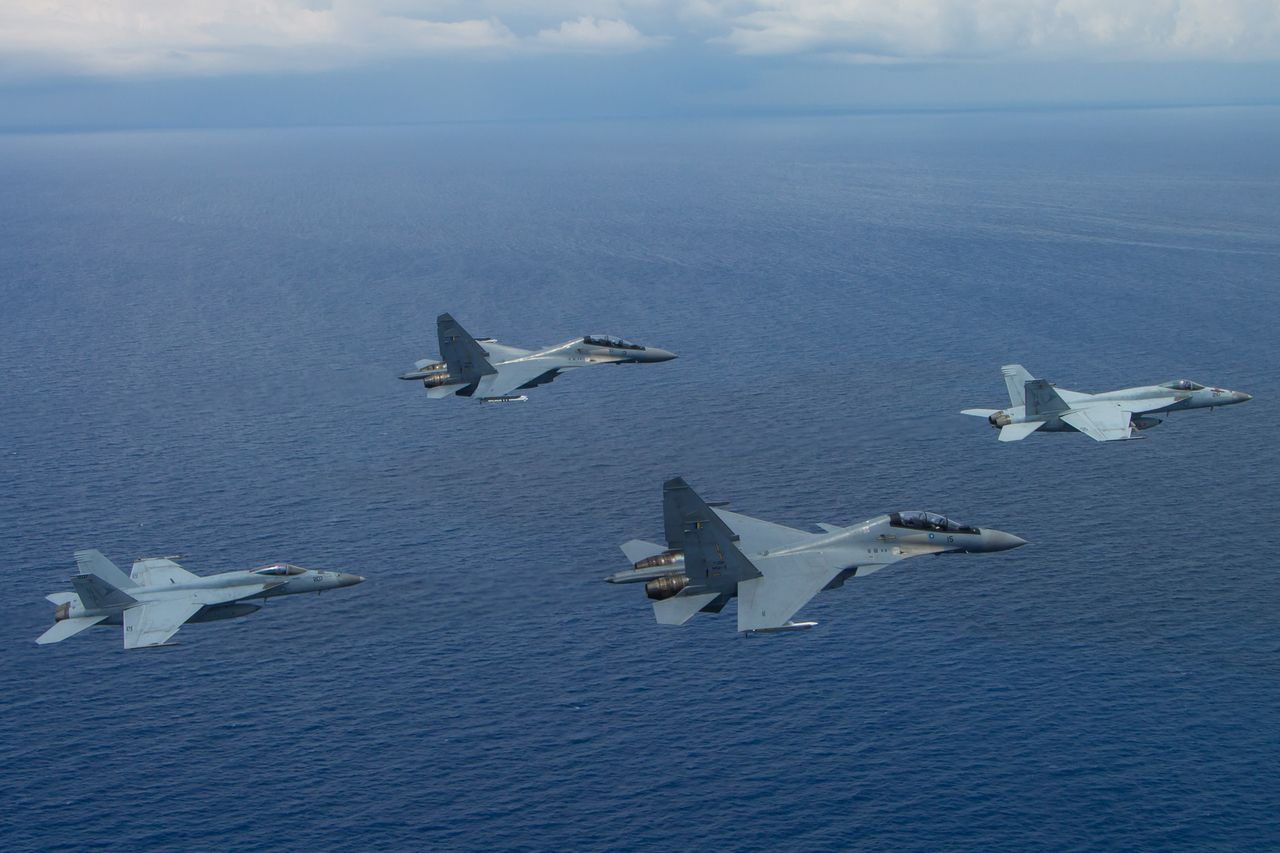
SOUTH CHINA SEA (May 10, 2015) Two F/A-18 Super Hornets and two Royal Malaysian Air Force SU-30MKM/Flanker H, fly in formation above aircraft carrier USS Carl Vinson (CVN 70) during a bi-lateral exercise aimed at enhancing security ties and partnerships with the Malaysian Royal Military. Carl Vinson Strike group is deployed to 7th Fleet area of operations supporting security and stability in the Indo-Asia-Pacific region. (U.S. Navy photo by Lieutenant Jonathan Pfaff/Released)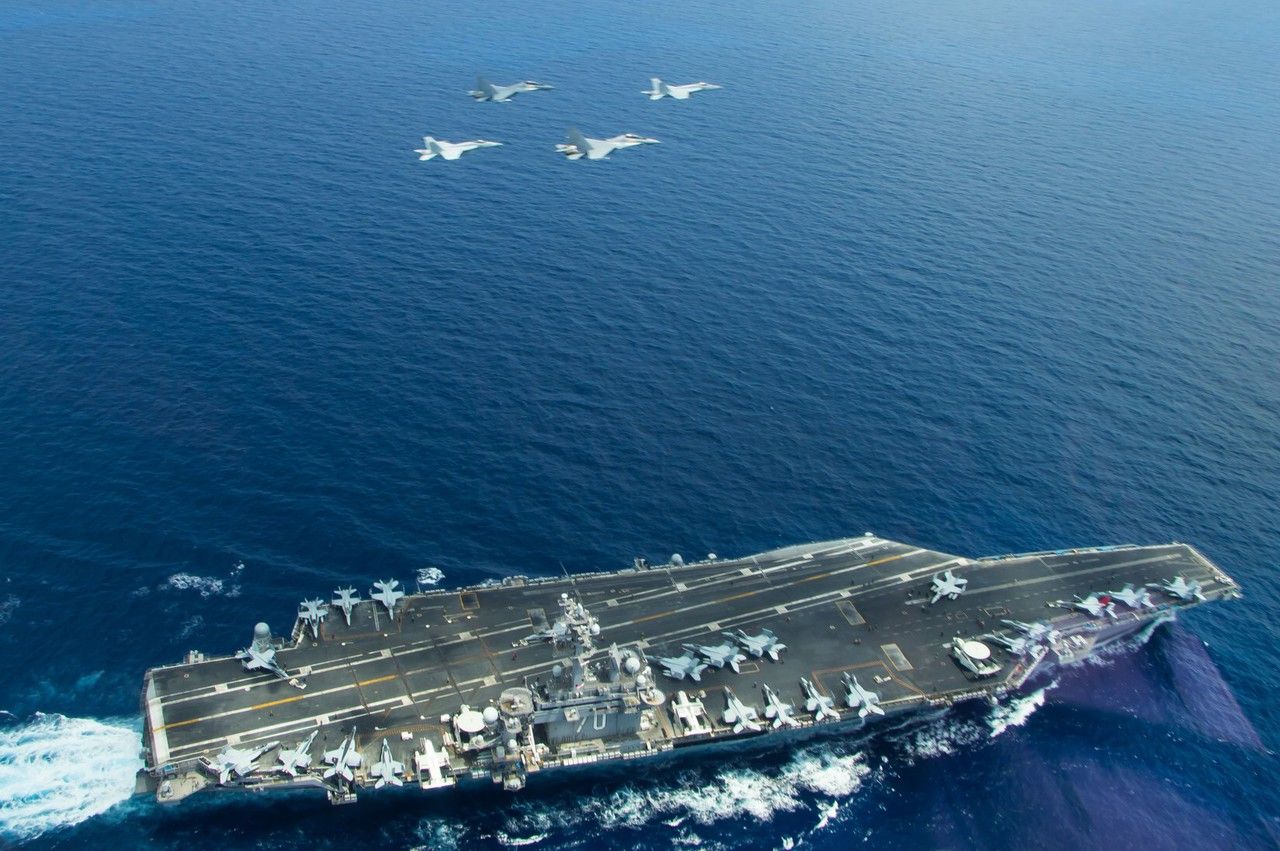
As part of a growing relationship between the Netherlands and Italy around the F-35 program, Italy has agreed to train Dutch fighter pilots along with its own using the newly-introduced Aermacchi T-346.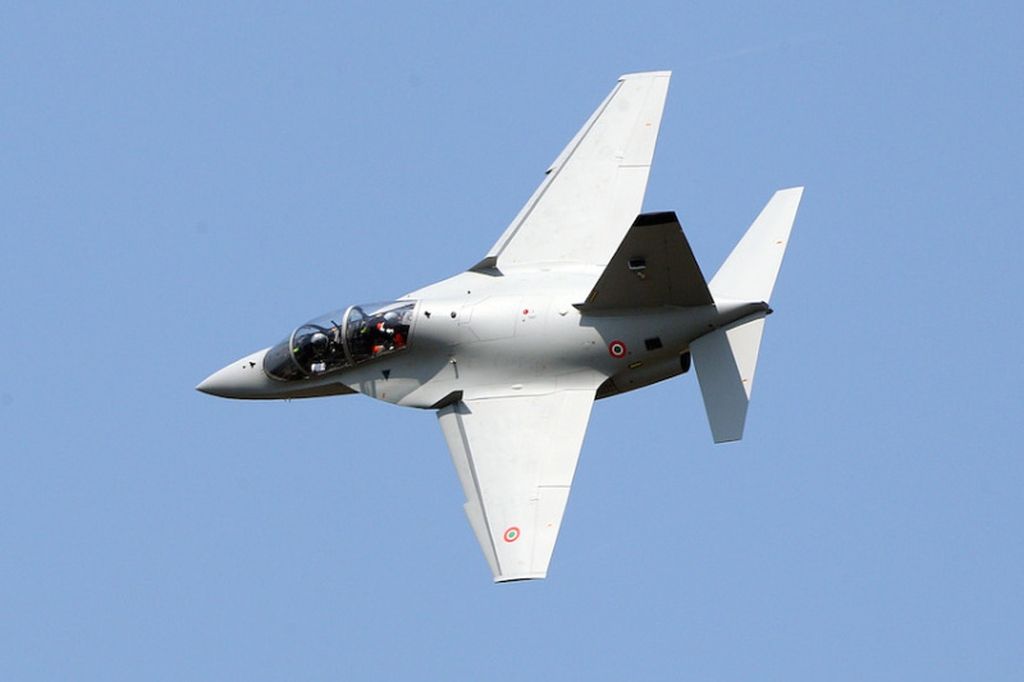
Czech air force looks to the future with enhanced Gripens.
LINK - http://www.flightglobal.com/news/articles/czech-air-force-looks-to-the-future-with-enhanced-gripens-412162/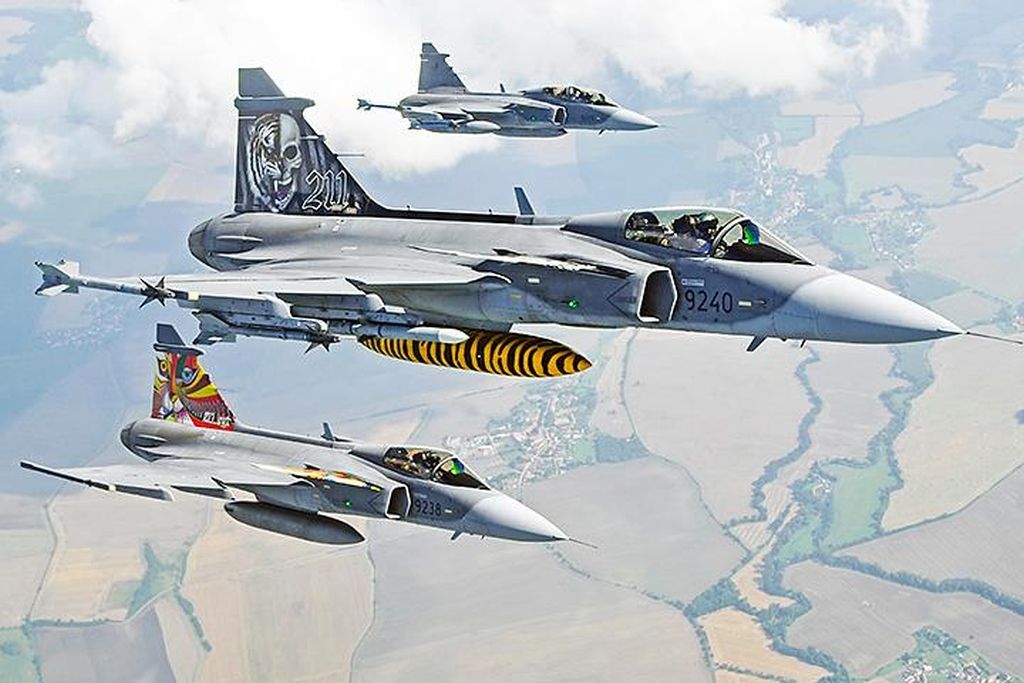
Geneva, Switzerland, May 11, 2015 ? Embraer Executive Jets will present its award-winning executive jets portfolio at the 15th European Business Aviation Convention and Exhibition (EBACE ? www.ebace.aero), at Geneva?s Palexpo Exhibition Center, in Switzerland, May 18-21.
LINK - http://www.embraer.com.br/en-US/ImprensaEventos/Press-releases/noticias/Pages/Embraer-Aviacao-Executiva-promove-sua-linha-completa-de-produtos-na-EBACE-2015.aspx
Post a reply
- Go to Next topic
- Go to Welcome
- Go to Introduce Yourself
- Go to General Discussion
- Go to Screenshots, Images and Videos
- Go to Off topic
- Go to Works in Progress
- Go to Skinning Tips / Tutorials
- Go to Skin Requests
- Go to IJAAF Library
- Go to Luftwaffe Library
- Go to RAF Library
- Go to USAAF / USN Library
- Go to Misc Library
- Go to The Ops Room
- Go to Made in Germany
- Go to Campaigns and Missions
- Go to Works in Progress
- Go to Juri's Air-Raid Shelter
- Go to Campaigns and Missions
- Go to Works in Progress
- Go to Skinpacks
- Go to External Projects Discussion
- Go to Books & Resources
